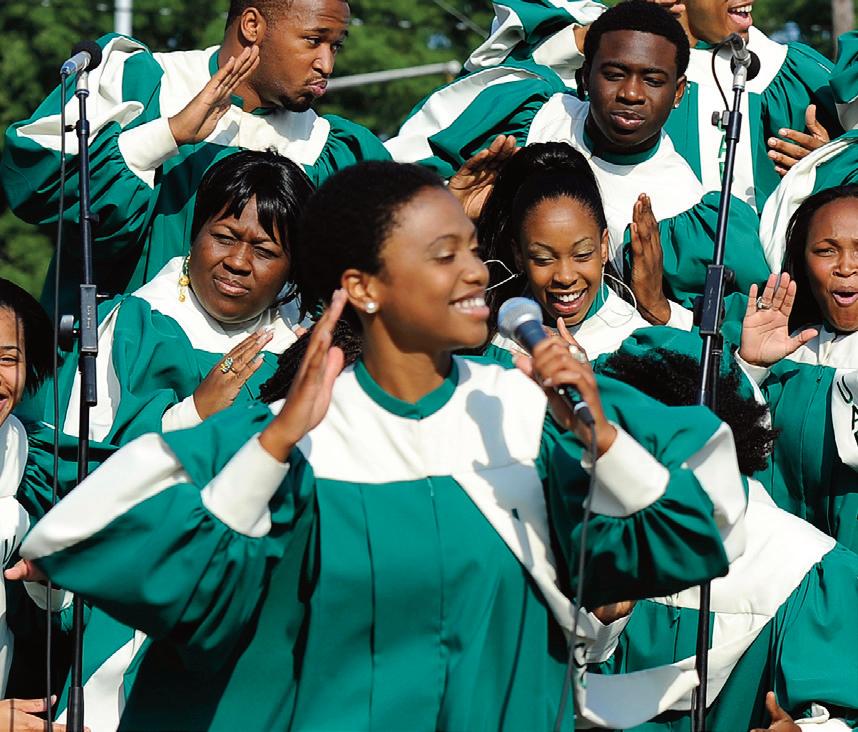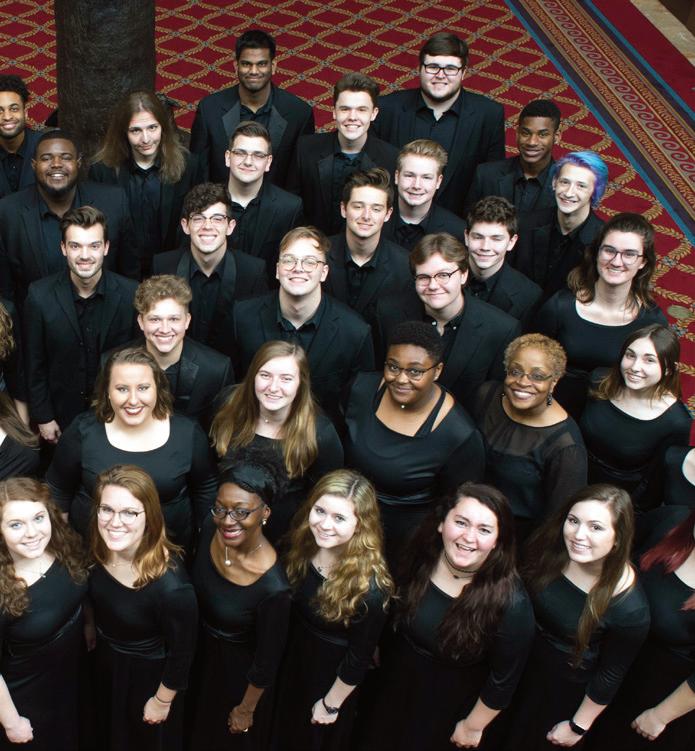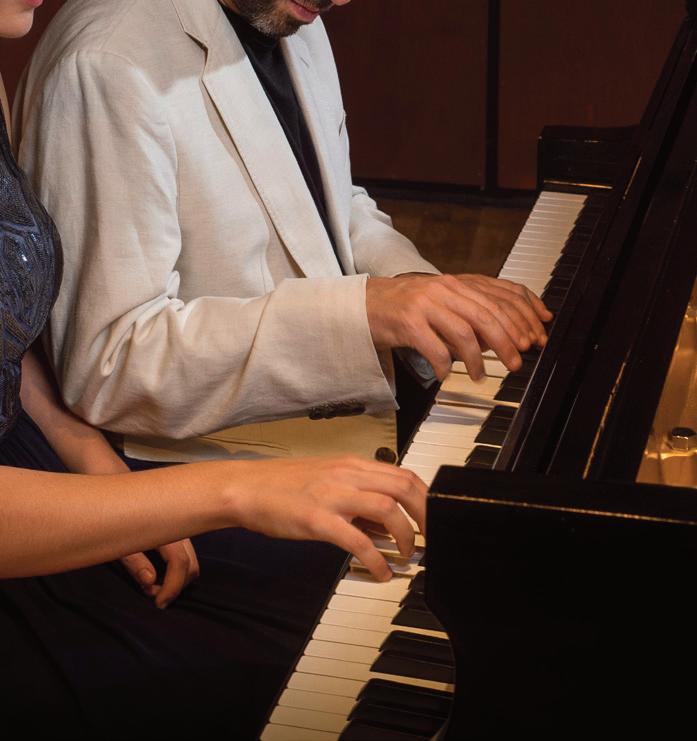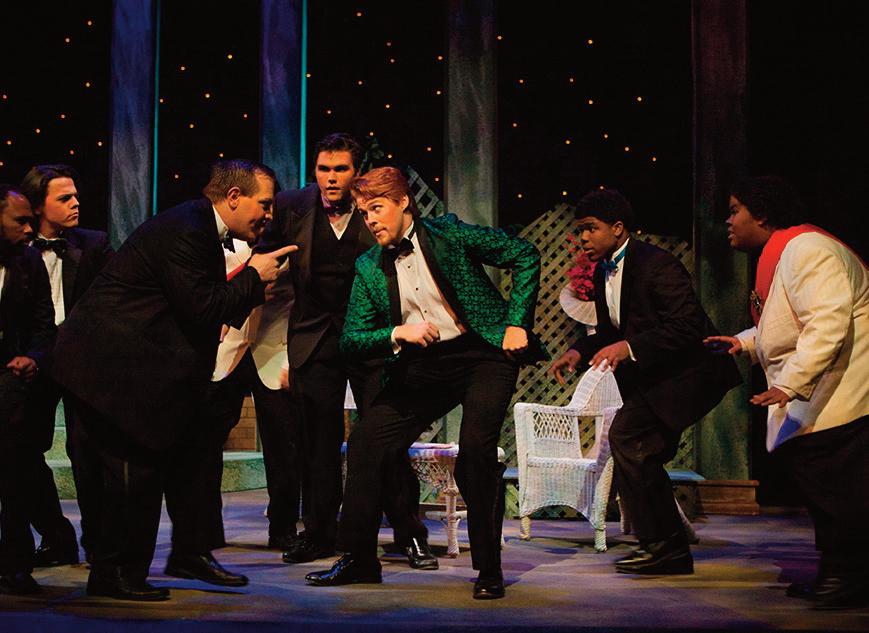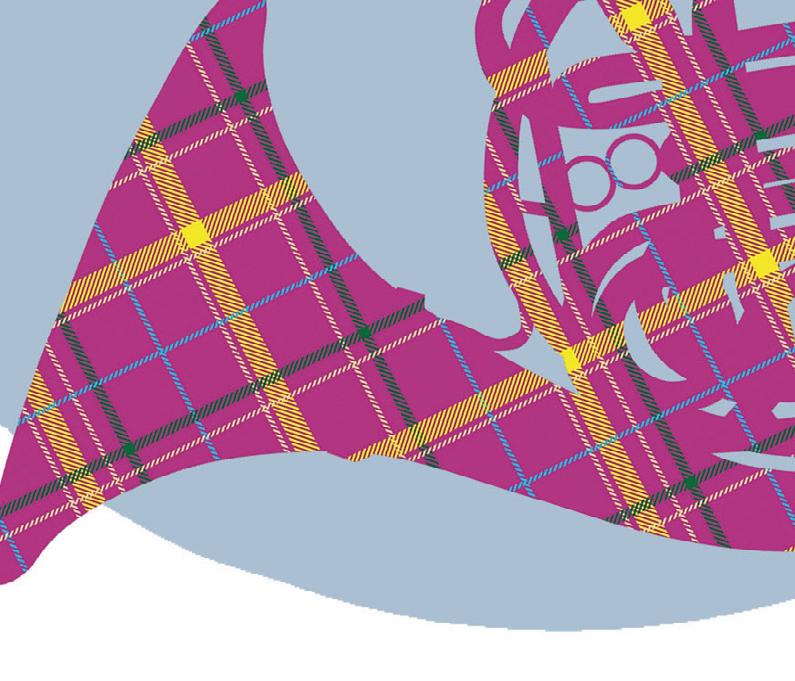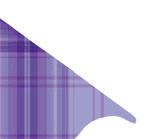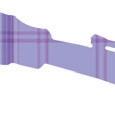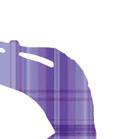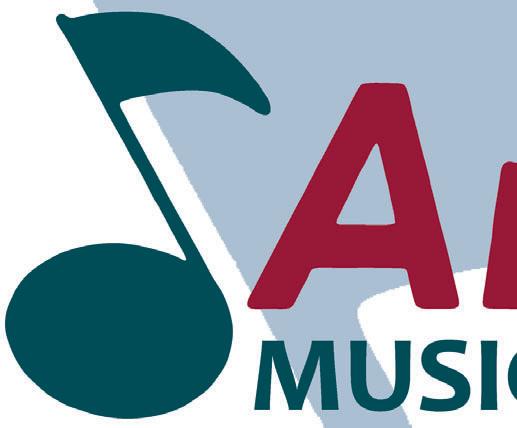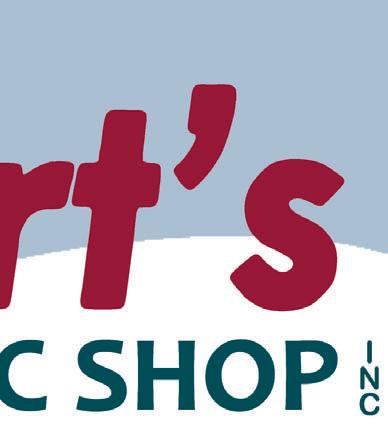ala breve
The Official Publication of the Alabama Music Educators Association







As an educator, one of the most impactful ways to improve is by educating yourself. That’s why the Yamaha Educator Suite (YES) helps music teachers access professional development opportunities, music teacher resources, program health support, advocacy assistance and more. YES brings you a network of like-minded teachers, experts and professionals, who want to help you achieve your goals. Let us help you raise the bar. Go to Yamaha.io/educatorsAAB2
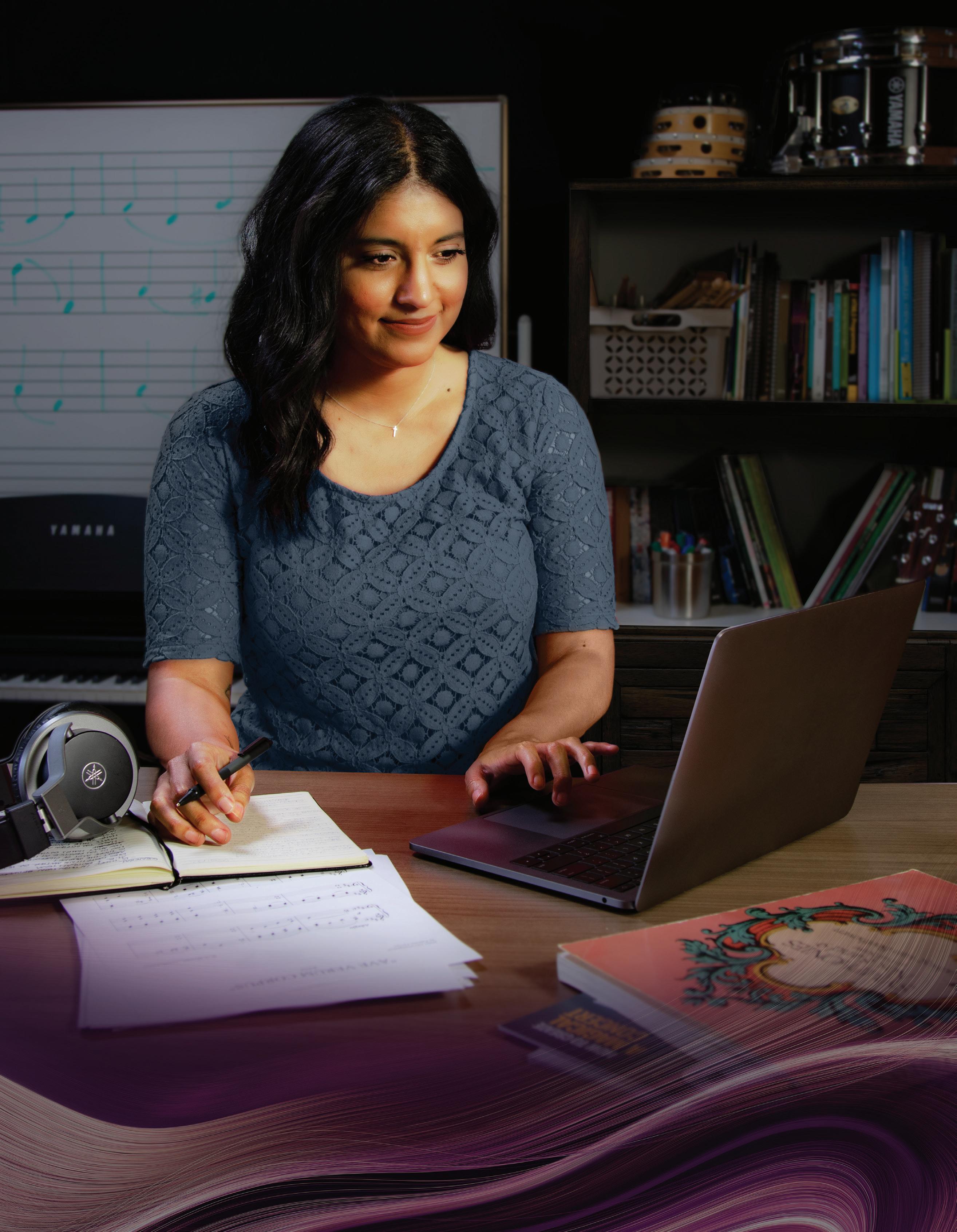
President David Raney Sparkman High School 2616 Jeff Road Harvest, AL 35749 256-837-0331 draney@madison.k12.al.us
Immediate Past President Greg Gumina Jefferson County Schools 2100 18th St S Birmingham, AL 35209 (205) 379-2000 ggumina85@gmail.com
President, AOA
Dr. Daniel Stevens University of North Alabama One Harrison Plaza Florence, AL 35631 (256) 765-4708 dstevens1@una.edu
President, AMEA Collegiate Mariah Martin (205) 765-1144 mamartin13@crimson.ua.edu
Industry Representative
Joey Harbison Gadsden Music Company 607 Broad Street PO Box 132 Gadsden, AL 35901 205-910-2622
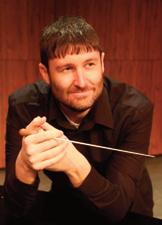
jmharbison@aol.com
Executive Director
Editor, Ala Breve Garry Taylor 1600 Manor Dr NE Cullman, AL 35055 (256) 636-2754 executive_director@myamea.org

Garry Taylor, Editor & Advertising Manager 1600 Manor Dr NE Cullman, AL 35055 (256) 636-2754 editor@myamea.org
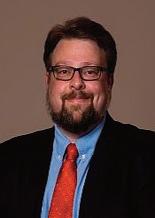

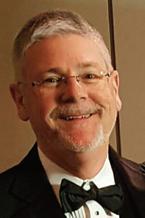
President-Elect
Dr. Rob Lyda
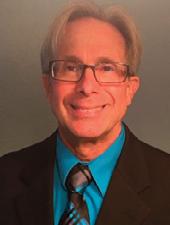

Cary Woods Elementary School 715 Sanders Street Auburn, AL 36830 334-663-0898 lydarob@me.com
Recording Secretary
Dr. Carla Gallahan
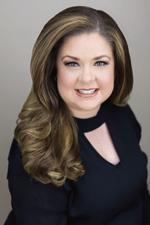


113 Long Hall Troy University Troy, AL 36082 (334) 670-3502 recording_secretary@myamea.org
President, AVA
Randall Fields
Bob Jones High School 650 Hughes Road Madison, AL 35758 (256) 772-2547 randall.fields.ava@gmail.com
AMEA Collegiate Advisor
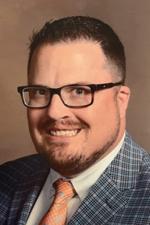
Dr. Meghan Merciers University of North Alabama UNA Box 5040 142 Music Building Florence, AL 35632-0001 (256) 765-4518 mmerciers@una.edu
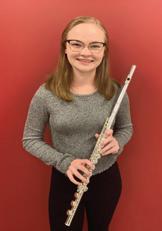
Assistant Executive Director
Dr. Russell Logan 2020 Janabrooke Lane Auburn, AL 36830 (334) 663-1702 rlogan9853@gmail.com
Treasurer/Registrar
Pat Stegall
AMEA Registration PO Box 3385
Muscle Shoals, AL 35661
treasurer_registrar@myamea.org
President, ABA
Joel Henson Pelham High School 2500 Panther Cir. Pelham, AL 35124 (205) 616-7478
jhenson@pelhamcityschools.org
President, ELEM/GEN
Sarah McLendon Hillcrest Elementary 400 E Watts St. Enterprise, AL 36330 (334) 313-2116
smclendon@enterpriseschools.net
President, HED Division Dr. Michael Zelenak Alabama State University 915 S. Jackson St. Tullibody Music Hall Room 208 Montgomery, AL 36104 334-604-9187
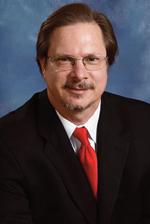
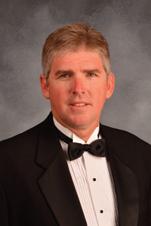
Alabama Department of Education Arts Education Specialist
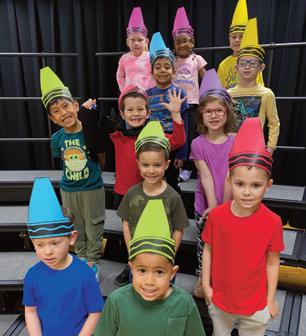
Andy Meadows 50 North Ripley Street Montgomery, Alabama 36104 (334) 694-4768

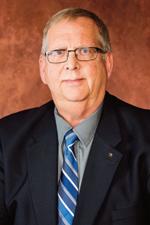
ameadows@ALSDE.edu
ADVERTISING & COPY DEADLINES
Fall - August/September (Back to School issue): July 15
Winter - October/November (Conference issue): September 15
Spring - May/June (All-State issue:) January 15
Summer - May/June (Digital Only issue:) April 15
Unless otherwise indicated, permission is granted to NAfME members to reprint articles for educational purposes. Opinions expressed in this publication are not necessarily those of AMEA or the Editor. All announcements & submissions are subject to editorial judgement/revision.The Alabama Music Educators Association is a state unit of NAfME: The National Association for Music Education, a voluntary, nonprofit organization representing all phases of music education in schools, colleges, universities, and teacher-education institutions. Active NAfME/AMEA membership is open to all persons engaged in music teaching or other music education work.
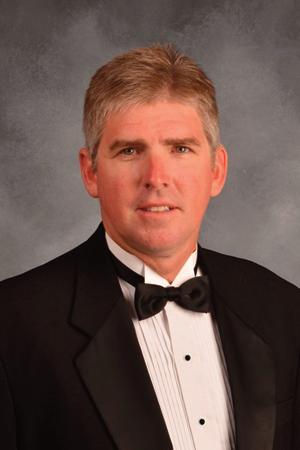
Iwould like to thank everyone for the support you have given me over the past two years. The people in our association that I had the privilege to work with and represent are quite simply the most admirable people I have ever met.

As the final weeks of school draws to an end, I cannot help but reflect on how important music education is and will continue to be for the future of education in Alabama. I encourage you to continue to help others understand the importance of our profession and the positive impact it makes on the lives of students. Here are a few suggestions that I leave with you to consider to help in this endeavor.
Never before has there been a better time to make the music classroom the epitome of high expectations. Sometimes it seems society is setting the bar lower and lower each year, but we can be the exception. If you expect very little from your students (and yourself), that is exactly what you will get. Resist the notion that if no one expects anything from your program, then it is ok to deliver on that expectation.
Make no mistake, your students and their parents may not appreciate the rigor you provide them now but I can certainly say they will in the future. Shouldn’t we teach with the future in mind? Be the person that raises the bar and inspires others to do the same!
Take every opportunity to create a special moment in someone’s life no matter how big or small the task.
The late Dr. Edd Jones, from the University of North Alabama, had a large impact on teaching me to have pride in all things. One day, while working in the music office together, he told me he had a doctorate in taping music. I then observed him meticulously space two pieces of handwritten music 1 mm apart while accurately connecting them with three pieces of tape creating one perfectly aligned foldable piece of music. The amount of time and effort he put into that task was a profoundly unique experience that I will never forget. Nearly 30 years later, I find myself smiling when I tape music together knowing Dr. Jones would be proud if he saw my work. I now realize that even the simplest of tasks can be made special, so long as you treat them as such.
Guess what? Your students are special too. The time and effort you consistently put into others will not go unnoticed. It will leave a lasting impact more powerful than you can ever imagine.
Take Care of Yourself!
A healthy and happy educator will attract positive attention from their community. You are extremely important to the people around you; therefore, you must take care of yourself.
Refresh your musical health by taking advantage to have great musical experiences. Attend a concert that you are not “in charge” of so you can experience the performance stress-free. Be involved with a local choir, band, or orchestra and enjoy the fulfillment of performing yourself. Establish a new hobby this summer that
you may escape to when given a chance throughout the year. This has truly helped me relieve stress over the years.
Rest! It is said that those that work using their mind rest by using their hands and those that work using their hands rest by using their mind. Find a physical activity that can give your mind a rest from time to time.
I encourage you to volunteer for a position within your Division. Having an active part in a professional community brings a whole new level of gratification and legitimizes your role in much of your community’s eyes. My progression started by volunteering to help out with district events and committees and was followed by accepting the call to serve in a leadership position. A local band
We must never forget that music is a wonderful gift and we are so privileged to be the ones to share that gift with others.
director called and asked me to serve as the ABA District 1 Chairman and I accepted. Two years later I married that band director. :)
Once you get involved, you have the opportunity to expand beyond your classroom and make the music community better. It allows you to display your professionalism and hold it in high esteem.
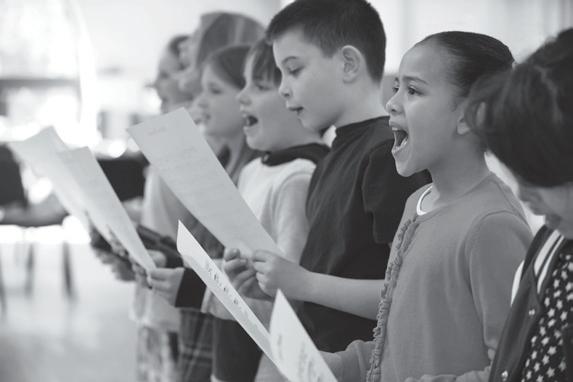

I hope you find these suggestions helpful. We must never forget that music is a wonderful gift and we are so privileged to be the ones to share that gift with others.
“Music is God’s gift to man, the only art of Heaven given to earth, the only art of earth we take to Heaven.” -Walter Savage Landor
As I fly off into the sunset, I look forward to seeing what the next four years will bring. Dr. Rob Lyda,

upcoming AMEA president, has always been a champion of advocacy for music education in our state. I look forward to what he will accomplish in the coming two years followed by our new AMEA
President-elect, Dr. Phil Wilson. The future is bright!
David Raney, President Alabama Music Educators AssociationThe new Executive Director will be named in early June and begin officially on July 1
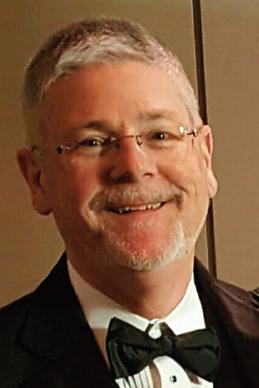

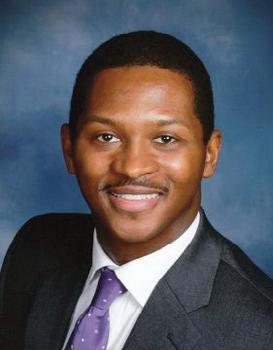


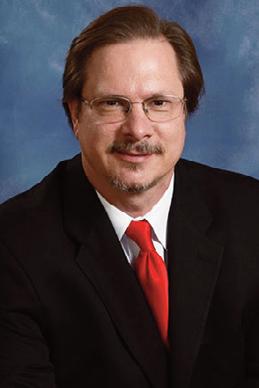
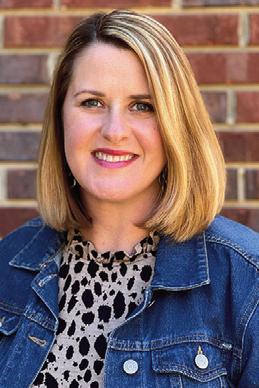
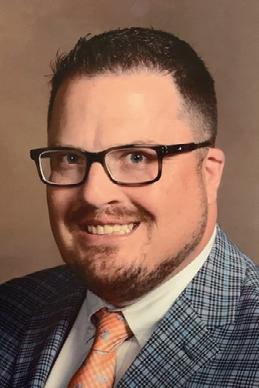
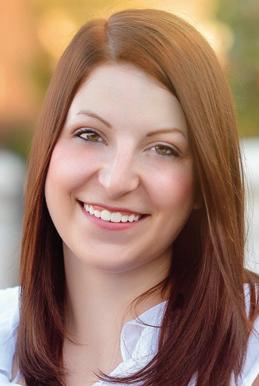
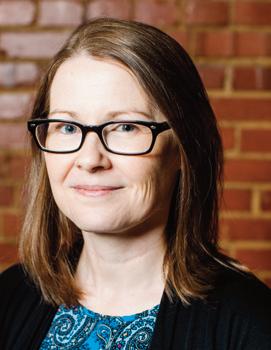
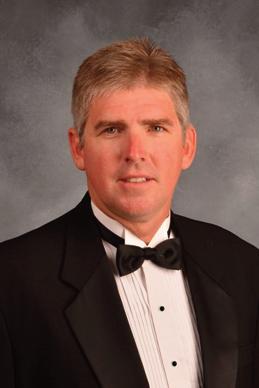





Iamoften asked about how to submit an article for publication in Ala Breve. I encourage you to consider sharing your thoughts, methods, or experiences with AMEA’s membership. The process is easy. Here are some guidelines:
Send text as a Word file or Word compatible file by • email as an attachment on use the online form on AMEA’s website. Single-spaced is preferred, but double-spaced is accepted. Please do not send text as a pdf unless it is to be used as an image with no formatting. Give your article an appropriate and catchy title.
but try to leave space for graphics. Articles should be accompanied by a headshot and short byline of the author.
We are always on the lookout for cover photos or artwork. Please don’t hesitate to pass along something that might be appropriate for the cover. Portrait orientation with space at the top for the masthead works best. Here are some examples of past covers submitted by our members.
Send images in jpg, tiff, or press-ready pdf format.
• Images should be at least 200, preferably 300 dpi. Send color photos if possible. Color photos may be converted to black & white, but not vice-versa. Send captions for your photos. If your images are too large to send by email, share a Dropbox folder or Google drive.
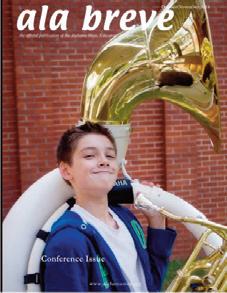
1/2 page text - approximately 450 - 500 words
• full-page text - approximately 900 - 1000 words
4” x 4” image - uses the space of approximately 175200 words

Ideally, each page of the article should have graphics - either an image, table, or diagram related to the article or an advertisement. Two and even three-page articles are acceptable
The Ala Breve is published 4 times a year – August, October, February, and May. The deadline for submitting articles and information for each issue is the 15th day of the month preceding publication – July 15, September 15, January 15, and April 15. Email editor@myamea.org or use the online form on AMEA’s website: http://myamea.org/ala-breve/submit-articleto-ala-breve/

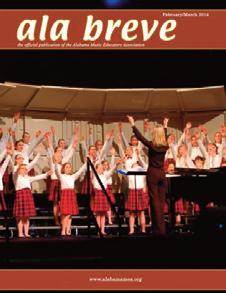

We look forward to hearing from you!
 Garry Taylor, Editor
Garry Taylor, Editor
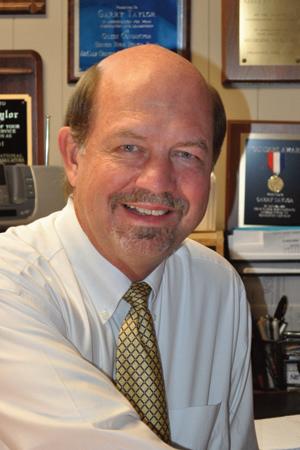
Reflecting back on the past two years of a challenging AOA presidency, I am honored to have served the dedicated, professional educators of our state. I have discovered that strength comes through diverse ideas, a wealth of varying pedagogy, and a creative grit that is determined to find success through cloudy times.
AOA has grown to complement the excellent achievements of each division of AMEA, by adding multiple District leadership roles, All-State and All-Region Chairs, and active participation from a growing membership of the Alabama Orchestra community. We have managed to shift All-State auditions to a virtual platform, ensuring that an ability to travel is not a requirement for participation. January 2022 provided opportunities for all student-musicians, through two new All-Region Festival events – it is through All-Region Orchestras that many woodwind, brass, and percussion students experienced orchestral music for the first time! The AMEA in-service conference allowed AOA to host several new events, including two masterclasses, an AOA featured chamber orchestra, and a president’s reception filled with collegiality and laughter.
I must take the opportunity to thank retiring Executive Director Julie Hornstein. She has propelled and motivated the organization for a dozen years or more, and should be given credit for the bulk of the organization’s success. Her wealth of knowledge and organization will be hard to match from the leadership team of AOA in the years to come. AOA was pleased to name an annual, endowed scholarship for All-State Orchestra in her honor in February 2022.
As I say farewell to the AOA presidency, I give one more plea to
the influencers in each of our Alabama communities. It is time to invest in music education – a well-rounded music education program – that explores multiple modes of expression through varied instruments and the voice.

If you are a school administrator, our AOA Executive Team wants to work with you on developing a new string orchestra program in your local school. As a complement to excellent band and choral programs around the state, a string program appeals to the diverse student willing to find their unique voice, and will place your school district on the map for prospective families. Your school will flourish for years to come, in part to the investments you make today.
Opportunities to engage AOA in the months to come:
https://alabamaorchestraassociation.org/
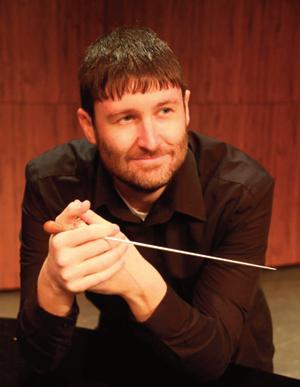

DEADLINES for 2023 ALL-STATE and ALL-REGION
October 14, 2022 – String, Piano, and Harp Auditions
November 11, 2022 – Woodwind, Brass, and Percussion Auditions
Thank you for your never-ending commitment to your student musicians. I am inspired by your commitment to engaging your community with the value of music. Please know that my door is always open at dstevens1@una.edu.
Sincerely,
Daniel Stevens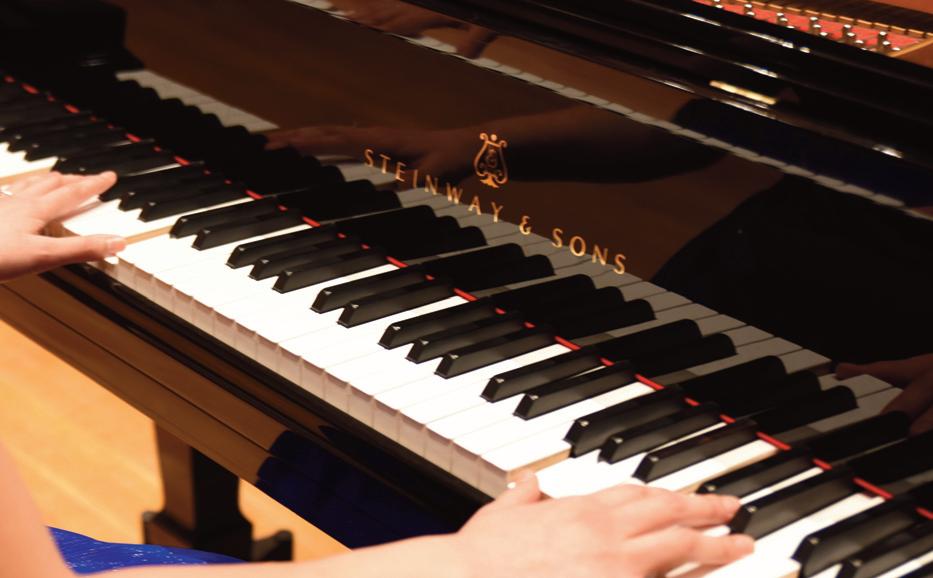

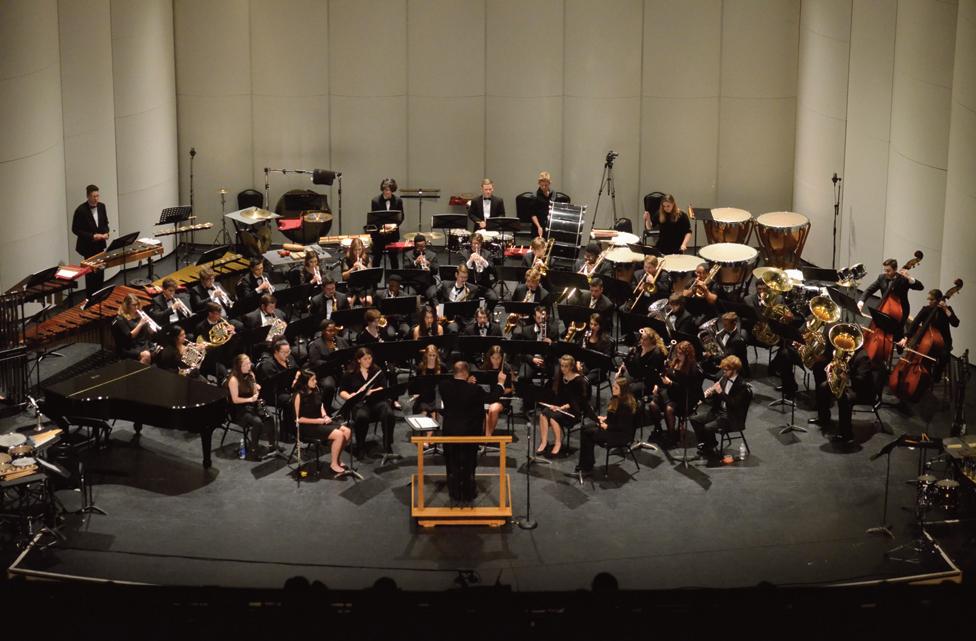




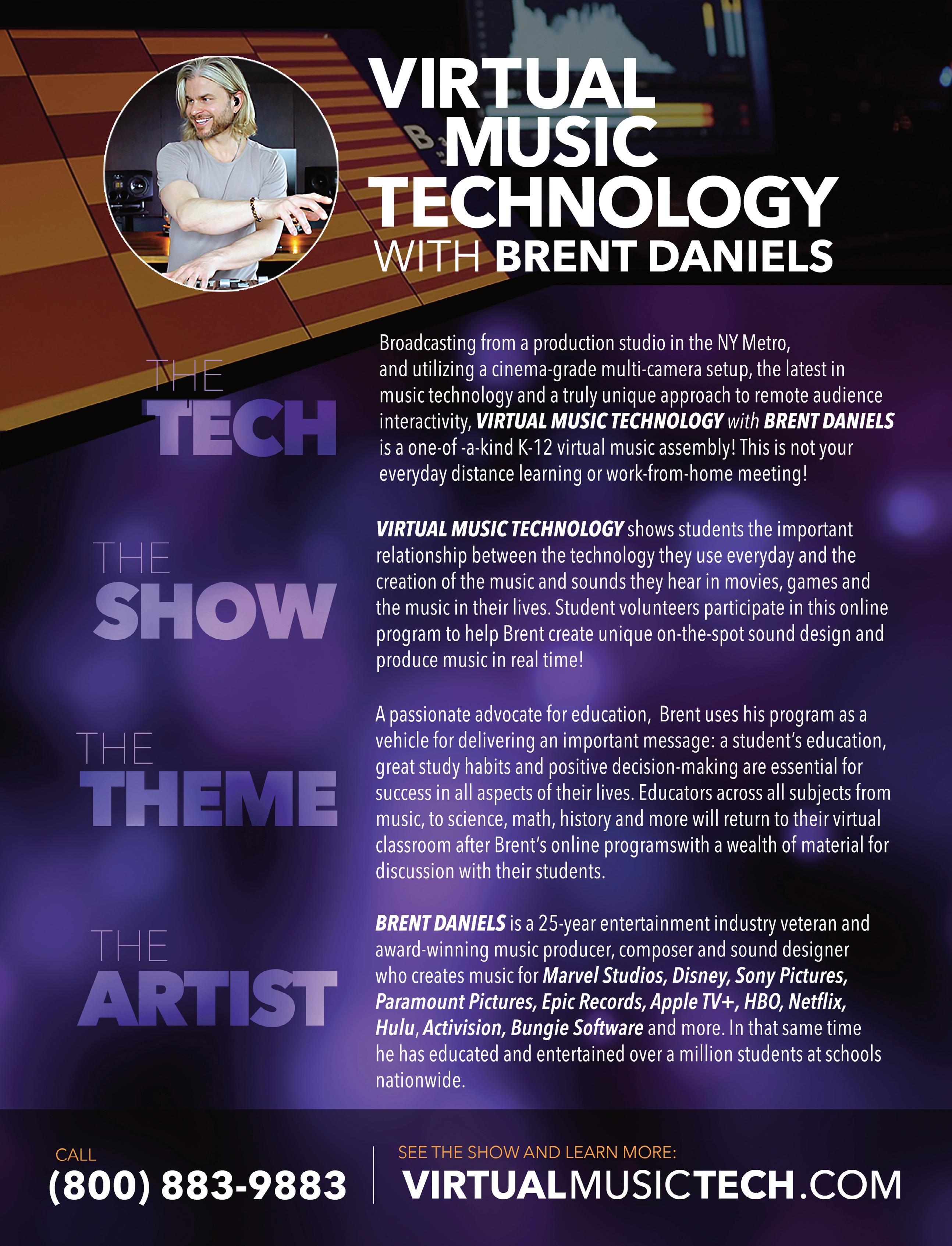 Michael Zelenak - President, Higher Education Division
Michael Zelenak - President, Higher Education Division
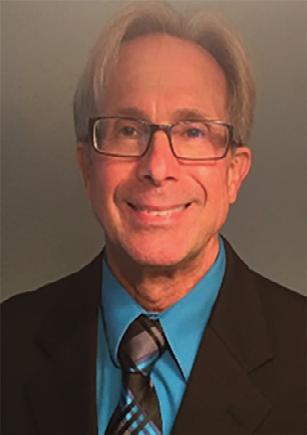

Did you know that an important difference between humans and animals is our ability to share stories? No other species uses stories to communicate information the way that humans do. Before technology conquered the world (I’m thinking printing press and not iPhone), humans used stories to communicate historical events, practical advice, and spiritual meanings. The human brain is wired in such a way that stories activate schema unlike anything else. You may forget all of the facts that someone tells you, but you will always remember their stories.
As educators, it’s important for us to share our stories with our students. Don’t get me wrong, I am not encouraging you to bore students with trivial reminiscing. Rather, share stories that contain important messages, especially your experiences with professional organizations such as AMEA and NAfME. Many students in our programs do not understand the importance of these memberships and how they can influence the trajectory of their careers. I know that I am “preaching to the choir” but my involvement has helped me get to where I am today.
Let me share my story. After graduating with my bachelor of music degree, I was not interested in pursuing a career in music education, I wanted to perform. So, I travelled the world having many great performance experiences, but something was missing. I wanted more. After some soulsearching, I entered an “Alternative A” Masters of Arts in Music Education program. In one of my classes, the instructor informed us about an upcoming music educators’ conference and encouraged everyone to attend. I followed that advice and was hooked
immediately. Because of that experience and others like it, I went on to earn National Board Certification and enrolled in a doctoral program in music education. All along the way, my active participation in NAfME-related events provided the inspiration and direction to accomplish my goals. I read Teaching Music, Music Educators Journal, and Journal of Research in Music Education regularly and never missed an annual conference. This was the foundation on which I built my career and this path is available to everyone through their membership. I could not have accomplished my career goals without the help of these resources.
After sharing YOUR story, remind your students of the immediate benefits to membership. I’ve mentioned access to information through publications and conference attendance, but let’s not forget about networking. Membership brings you in contact with like-minded people who share the same passion. Networking can provide insights on job opportunities, new repertoire, and so forth. Regardless of the membership fee, these experiences are priceless.
Before passing the baton to Dr. Carly Johnson, I will leave you with one closing remark. There is a music teacher shortage in Alabama. I can’t remember a time when there were so many employment opportunities. Share your stories with your students. Encourage them to join AMEA and begin creating their own legacy. In addition, don’t ignore those accomplished performers who are looking for something more in their profession. A career in music education may bring a deeper sense of satisfaction than they could have imagined. It worked for me and just might work for them.
Best wishes to all.
There is a music teacher shortage in Alabama. I can’t remember a time when there were so many employment opportunities. Share your stories with your students. Encourage them to join AMEA and begin creating their own legacy.John Cooper, AMEA Tri-M Chair
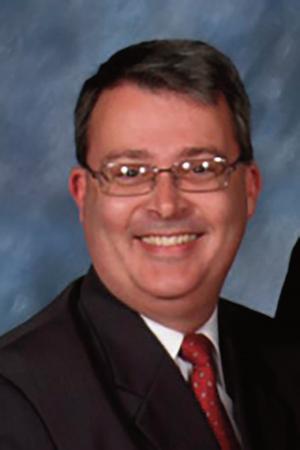

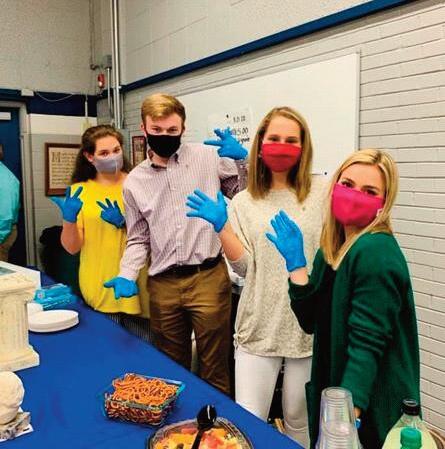
The Tri-M National Music Honor Society at the American Christian Academy in Tuscaloosa has a very active chapter. Heather Henson serves as the advisor for the chapter and Haley Vinson serves as the chapter president this year.
The focus of every Tri-M chapter can be slightly different. In addition to inspiring participation in music at the high school level, an important purpose of the ACA chapter is to bridge the relationship between the elementary level music students through mentoring and service activities. As a result, they have regular activities that reach out to these younger students, and there are ongoing mentoring relationships between 5th-grade beginners and more advanced high school Tri-M musicians.
This busy chapter is involved with other activities. Some of those are performances at the Tuscaloosa VA hospital and activities to support all faculty members. This chapter also heads up various fundraisers within the music department and participates in the school “Winterfest” by designing and running a music-related game.
Congratulations to the ACA Tri-M chapter students and advisor!
If your chapter is up and running
and beneficial to your overall program, I would like to highlight some of the activities of your chapter. I can be reached at: jbcclarinetstudio@gmail.com. Please send me an email and I will try to share some of the great things going on in Tri-M in Alabama.

Ready to start your chapter? Go to: https://nafme.org/startyour-tri-m-chapter-today/



 Dr. Meghan Merciers, Advisor
Dr. Meghan Merciers, Advisor

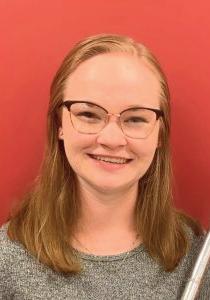
Since the AMEA Conference, cNAfME chapters across Alabama have been very active! The return to in-person activities has brought old and new learning opportunities, and this spring semester has been very busy for our collegiates. Here are a few updates from cNAfME Chapters across Alabama.
At Samford University, they make it a top priority for all music education students to attend AMEA every year. Many of their efforts are focused on fundraising and drawing support for this professional development. Their monthly meetings include research and presentations from their advisor and get-togethers that help them form connections with each other. Looking forward, their “chapter is currently working towards collaborating with local schools!” From Sam Gravlee, Samford University cNAfME President.
At the University of Montevallo, their emphasis has been on community outreach, as they have hosted events to help spread and support local music education. They partnered in helping present an “instrument petting zoo” in which local students were able to try out instruments to select for beginning band. They also played a significant role in facilitating and hosting the Montevallo middle school and high school Honor Band. Of course, their students have been working towards their Praxis II exams, and their chapter hosted a “Praxis Jeopardy game night”
to help each other study. Looking forward, their “chapter is currently working towards planning a department formal at the end of April!” From Makala Cone, University of Montevallo cNAfME President.
For schools like the University of Alabama and the University of North Alabama, the spring semester has brought exciting new opportunities. Both of these schools have formed music education ensembles in addition to chamber choirs, in which upperclass music education students conduct pieces and run the ensembles. This has been an excellent opportunity for leadership, learning, and growth! From Grace Waldrop, University of North Alabama cNAfME President, and Noah Graham, University of Alabama cNAfME President.
It is inspiring to see how active and motivated our music education students are, and we are enthusiastic to see how they bring that energy into the field. This article represents only a brief sample of the various activities in which our chapters are engaged. We want to wish all of our collegiate music education students good luck on their exams and juries for the end of the semester! Stay tuned for submission information in our upcoming newsletter to submit chapter updates. Be sure to check out our Instagram @cnafme_al and tag us in your event posts!
It is inspiring to see how active and motivated our music education students are, and we are enthusiastic to see how they bring that energy into the field.Sarah McLendon- President, Elementary/General Division

“A sound of hope, a sound of peace, a sound that celebrates and speaks what we believe. A sound of love, a sound so strong. It’s amazing what is given when we share a song…. Soothe a soul, mend a heart, bring together lives that have been torn apart.
Share the joy, find a friend. It’s a never ending gift that circles back again… Music builds a bridge, it can tear down a wall. Music is a language that can speak to one and all!
This is why we sing, why we lift our voice, why we stand as one in harmony.
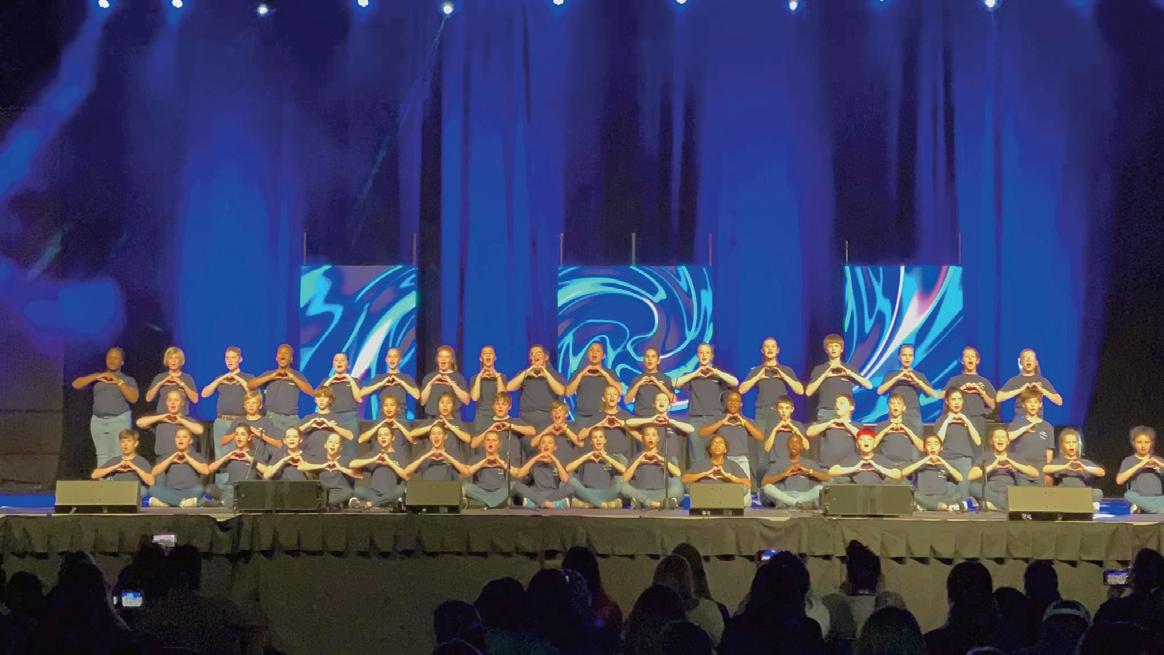
This is why we sing, why we lift our voice, Take my hand and sing with me.
This is why we sing!”
We have been teaching through some of the toughest days in recent history. We will continue to teach in times of contentment along with times that require deliberate perseverance. But why? Why do we keep doing our jobs? What keeps you in the classroom? What motivates you to walk into the building every day? Do you know the answer to your “Whys?”
To me, it is watching my students grow as musicians. It is the smiles on their faces when they finally grasp a concept. It’s the laughter as they folk dance around the room. It’s the joyful sounds of songs coming together. It’s the scarves floating through the air to the music. It’s watching a production slowly come to fruition. It’s the audience’s reaction as we finish a performance. It’s going to performances at the secondary schools and seeing my former students on the stage. It’s hearing from former students as they recount their favorite stories from my class.
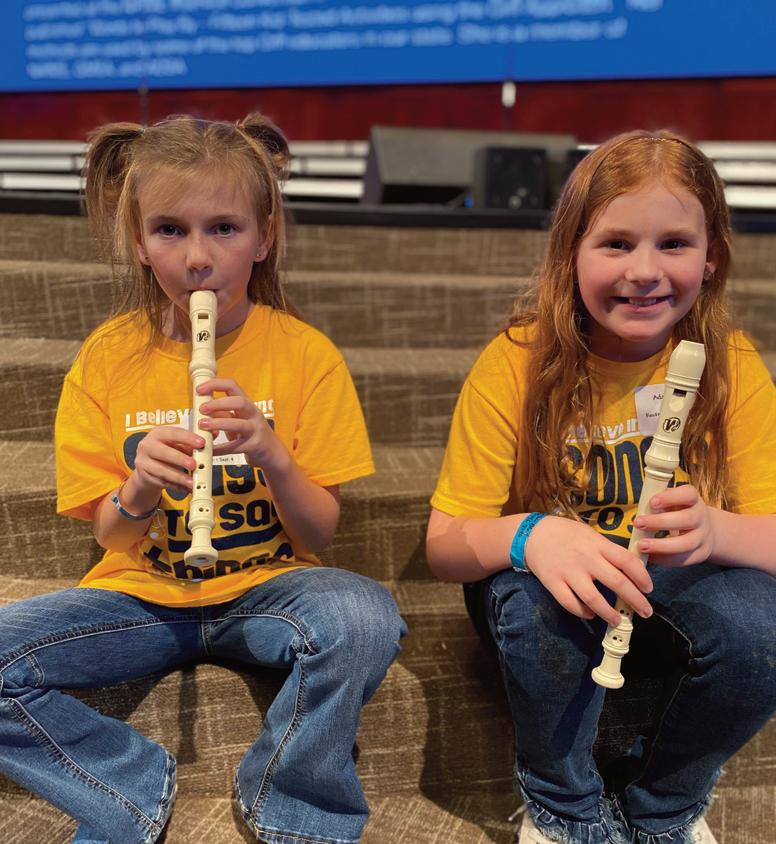
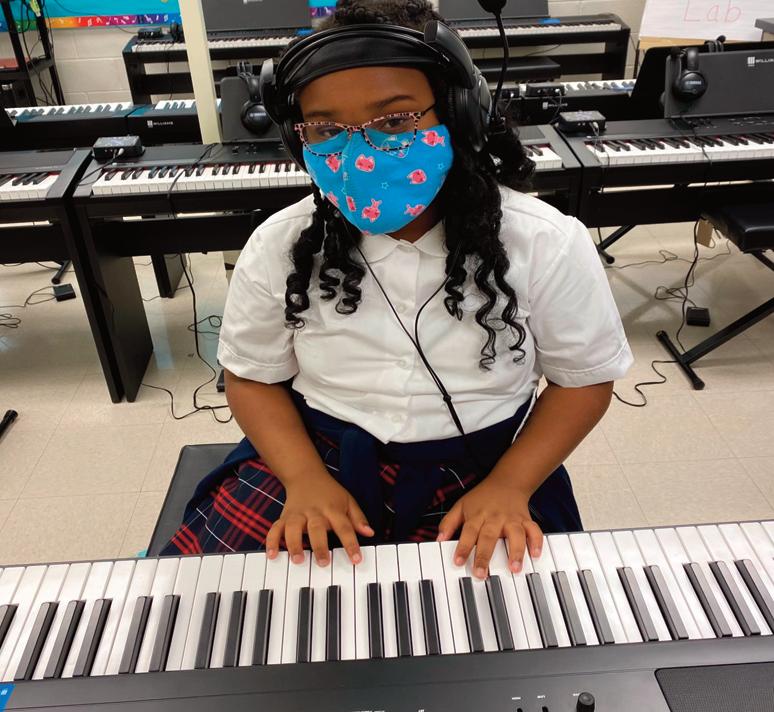
This summer as you relax and recharge, use that time to reflect on your “whys.” Take time to discover why you sing and why you lift your voice. In doing so, you will identify the foundational purposes of why you chose the field of music. Music education is more than an occupation. It is a calling. Let us start the new year with a recharged passion.
It is time to renew your NAfME membership. Do so quickly so that you will not miss any fun PD sessions and conferences.
We want to stay in touch with you and reach out to those who are not members of AMEA. Please email us at elementaryamea@ gmail.com to update your information and please share this address with those who you know
are not members.
Upcoming Dates:
Elementary Music Festival, Friday, October 14th, 2022; Metropolitan Church of God in Birmingham, Alabama
Joint Fall Workshop sponsored by Elementary/General Division of AMEA, AOSA, and SHAKE, Saturday, October 15th, 9 a.m. to 3 p.m. at Metropolitan Church of God
NAfME In-Service Conference, Nov 2-6, 2022, National Harbor, Maryland
American Orff-Schulwerk Association, National Professional Development Conference, November 2-5, 2022, Kansas City. Missouri
2023 AMEA Professional Development Conference, January 19 - 21, 2023, BJCCBirmingham, AL


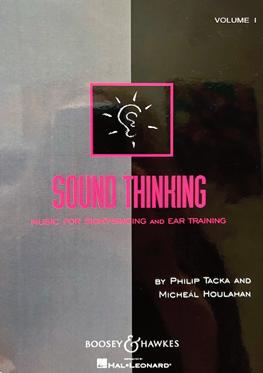 By: Philip Tacka and Micheal Houlahan
by Deanna Bell
By Deanna Bell, Music Teacher at Vestavia Hills Elementary East, belldr@vestavia.k12.al.us
By: Philip Tacka and Micheal Houlahan
by Deanna Bell
By Deanna Bell, Music Teacher at Vestavia Hills Elementary East, belldr@vestavia.k12.al.us


Adjunct Professor at the University of Alabama at Birmingham and Miles College belldr@uab.edu and drbell@miles.edu
“Sound Thinking” is a new music education series based on the Kodály concept. It is designed as a resource for the Kodály-inspired classroom. Volume 1 contains curriculum planning and the teaching of songs with focus on early childhood experiences through rhythm, melody, and the extended pentatonic scale. The musical examples are drawn from folk songs and art music encompassing a wide range of historical eras. The examples can be used for developing a variety of skills including sight-reading, dictation, musical memory, rhythmic reading, formal analysis, part singing, and improvisation. It is a must have for the elementary music room. I attended the session with Philip Tacka at the Kodály National Conference and was sold! I will be incorporating this in my teaching starting next year!
Sections in the book include:
How to Practice Melodic Elements
How to Practice Rhythmic Elements
The Development of Musical Memory
Memorizing by Hand Signs
Memorizing from Staff Notation
Memorizing by Ear
Sight Singing
Dictation
Part Singing
I hope that you enjoy this new book as music as I. It would be a great book study or Professional Development for any music educator.
Thank you for allowing me to serve as President of the Alabama Kodály Educators and AL AOSA chapters. I have enjoyed every minute and I am so excited about the future of our organizations.
I hope you all have a wonderful summer!
Deanna BellBuy from West Music: Item No. 816655
https://www.westmusic.com/music-booksresources/music-classroom-booksmaterials/kod%c3%a1ly/816655
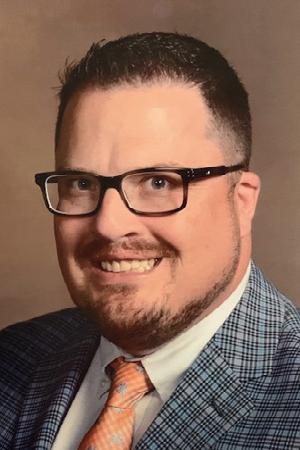
As the school year is coming to a close, it is a great time to reflect on the past year’s happenings. My first article as President of ABA talked about things returning to normal after the pandemic. I was convinced we had moved past the pandemic and were pushing back to the way we had always done things in the band world. In the words of Lee Corso, “not so fast!” However, as band directors always do, we made things happen in the face of adversity. It is easy to focus on all of the negatives of this past school year. There are so many positives that far outweigh the hard parts of our year. It makes how
we ended the year even sweeter. The All-State Festival 2022 was once again a successful musical experience for the band students in the state of Alabama. The event commenced with the All-State Solo Festival. It was a great display of the amazing student musicians in our state. The finalists were: John Peter Aufdemorte, Noah Bender, Harrison Ellis, Wei Wei Guo, Elias Loo, Jones Preg, Koen Pritchard, Julia Richards, and Yukino Shichinohe. Being a finalist for this prestigious event is a huge honor. The All-State Soloist Finalist winner for 2022 was bassoonist Elias Loo from Sparkman High School.
We kicked off Thursday’s events with a well-attended concert by the Albertville High School Wind Ensemble under the direction of Dr. Taylor Cash. This outstanding group missed their opportunity to perform at AMEA due to the pandemic. I applaud the ABA board for allowing me to extend this invitation to these outstanding students. I especially enjoyed their rendition of Morten Lauridsen’s O Magnum Mysterium. The resonance of the ensemble in that performance venue was moving. The Friday night feature concert was performed by the University of South Alabama Wind Ensemble led by Dr. William Petersen.
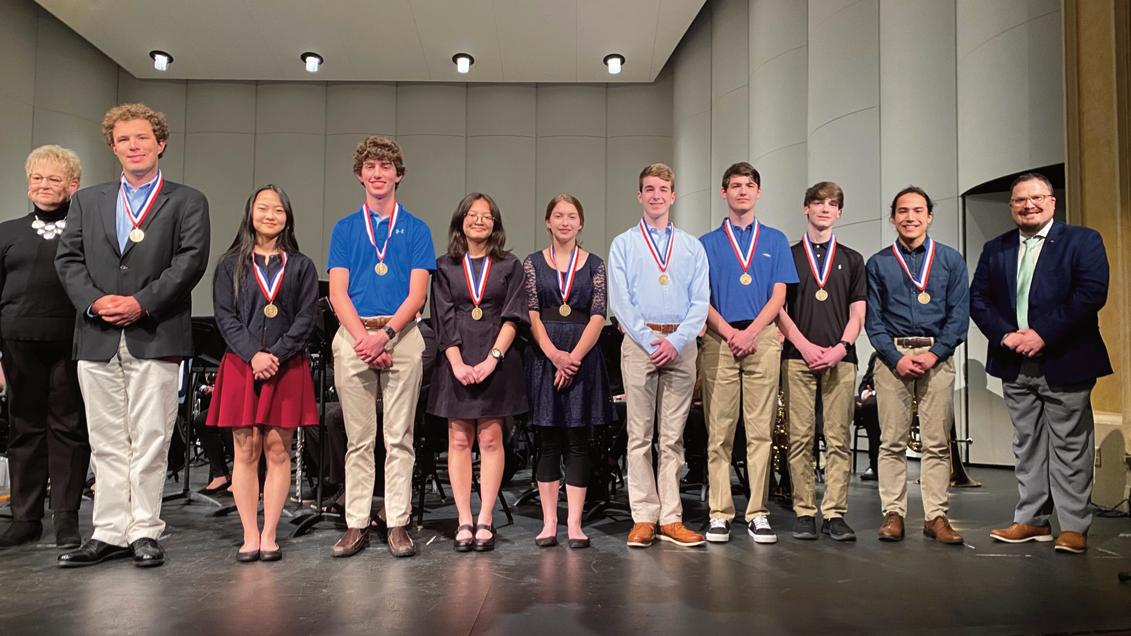

Left to Right:
ABA President-Elect Lori Hart
9th Place: John Peter Aufdemorte, Spain Park High School
8th Place: Yukino Schichinohe, Cullman High School
7th Place: Koen Pritchard, Hewitt-Trussville High School
6th Place: Wei Wei Guo, Hewitt-Trussville High School
5th Place: Julia Richards, Fairhope High School
4th Place: Jones Preg, Hewitt-Trussville High School
3rd Place: Harrison Ellis, Fultondale High School
2nd Place: Noah Bender, Hewitt-Trussville High School
1st Place: Elias Loo, Sparkman High School
ABA President Joel Henson
Piccolo: Jaxon Dunlevy, Vestavia Hills HS
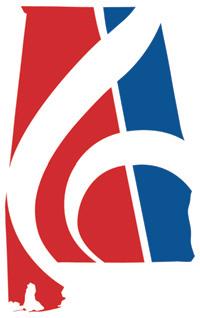
Flute: Hayden Purser, Bob Jones HS
Oboe: Dominic Luthje, Daphne HS

Bassoon: Elias Loo, Sparkman HS
Eb Clarinet: Ashley Rodgers, Hewitt-Trussville HS
Bb Clarinet: Andrew Robertson, AL School of Fine Arts
Alto Clarinet: Ellie Mann, Hewitt-Trussville HS
Bass Clarinet: Gabe Clark, Fairhope HS
Contrabass Clarinet: Martin Lin, Auburn HS
Alto Saxophone: Michael Algarin, Mongomery Catholic
Tenor Saxophone: Thomas Washer, Helena HS
Baritone Saxophone: Elijah Putman, Cullman HS
Trumpet: Ellen Head, Haleyville HS
French Horn: Madaline Cagle, Spain Park HS
Trombone: James Diffey, Oak Mountain HS
Baritone: John Aufdemorte, Spain Park HS
Tuba: George Luft, Grissom HS
String Bass: Noah Sugg, Fairhope HS
Percussion: Koen Pritchard, Hewitt-Trussville HS
This concert, held in the beautiful Saenger Theater, was outstanding. The group featured two soloists, Drew Pritchard (BM in Music Performance, University of South Alabama) and their esteemed Assistant Professor of Clarinet, Dr. Kip Franklin. They closed their performance with a powerful rendition of the fourth movement of Respighi’s Pines of Rome.
We were very fortunate to have worldclass clinicians at this year’s festival. The Middle School White Band was conducted by Tyler S. Grant. Tyler is a native of Alabama who is blossoming as a young composer. The Middle School Red Band was conducted by Robert Herrings from Henry Middle School in the Leander School District of Austin, Texas. His band was just accepted for a historic fourth time to perform at the Midwest Clinic. The Blue Band was conducted by Dr.

(front row)
Daniel Tembras, Blue Band, Jamie Nix, White Band, Steven Davis, Red Band.
(back row:) Robert Herrings, MS Red Band, Tyler Grant, MS White Band
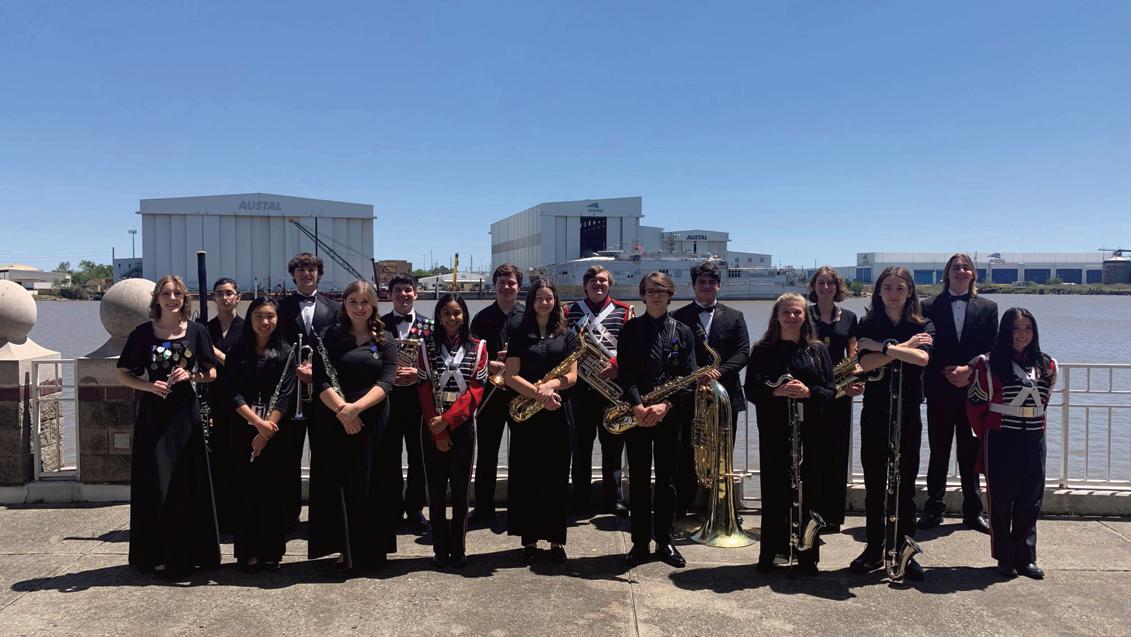
Daniel Tembras from Purdue University Fort Wayne. His perfect combination of humor and musicianship led to a great performance by this ensemble. The White Band was conducted by another Alabama native, Dr. Jamie Nix, from Columbus State University. This group’s rendition of Arturo Marquez’s Danzon No. 2 was exciting and musical. Lastly, our Red Band was conducted by
Steven Davis from the UMKC Conservatory. Their performance was spectacular! I was really moved by Omar Thomas’ Shenandoah and amazed by the Polka and Fugue from Schwanda the Bagpiper with so little rehearsal time.
The All-State Festival is a huge undertaking for the Alabama Bandmasters Association. The District VII band directors, led by chairman
Piccolo: Ava Risner, Central HS Florence
Flute: Lauren Tillman, Sparkman HS
Oboe: Keira McVay, Grissom HS
Bassoon: Abbey Stephens, Decatur HS
Bb Clarinet:: Jones Preg, Hewitt-Trussville HS
Alto Clarinet: Olivia Gray, Trinity Christian School

Bass Clarinet: Shawn Mullen, W.P. Davidson HS
Contrabass Clarinet: Jackson Moons, Baker HS
Alto Saxophone: Tristan Trees, Sparkman HS
Tenor Saxophone: Jason Alexander, Auburn HS
Baritone Saxophone: Erik Martinez, Minor HS
Trumpet: Justus Merkerson, Clay Chalkville HS
French Horn: Julia Richards, Fairhope HS
Trombone: Chase Smith, Bob Jones HS
Baritone: Dustin Powell, Elmore County HS
Tuba: Drake Miller, Vestavia Hills HS
String Bass: Josh Teeter, Carroll HS
Percussion: Will Hall, New Hope HS
Piccolo: Katie Wallace, Fairhope HS
Flute: Tracy Li, Spain Park HS
Oboe: Elise Larson, American Christian Academy
Bassoon: Grace Greer, Auburn HS
Bb Clarinet: Diya Samal, Oak Mountain HS
Bass Clarinet: Morgan Hodges, Colbert Heights HS
Contrabass Clarinet: Joshua Schlerf, Weaver HS
Alto Saxophone: Bailey Terkeurst, Buckhorn HS
Tenor Saxophone: Chance Bellew, Glencoe HS
Baritone Saxophone: Jackson Ingalls, Montgomery Catholic
Trumpet: Kemp Horne, Hoover HS
French Horn: Shawn Guffey, Ider HS
Trombone: Will King, James Clemens HS
Baritone: Joshua Winn, Oak Mountain HS
Tuba: Charlie Grimes, Bob Jones HS
String Bass: Aidan Breakfield, Daphne HS
Percussion: Victoria Nail, Oak Mountain HS
Meredyth Peterson, worked tirelessly to make this event successful. Another aspect of making our event run smoothly is the outstanding band hosts and percussion techs for each ensemble. Jon Bubbett and Kevin

Ownby (Red), Damon McAllister and Doug Teuscher (White), Heather Henson and Alex White (Blue), David Caddell and Courtney Lankford (MS Red), and Connie and Tim Hammond and Josh Lynch (MS White) served in this capacity for us this year. Our clinicians were impressed with their organization, commitment, and professionalism during the entire experience with the Alabama Bandmasters Association. ABA Executive Officers Lori Hart, William Mixon, Terry Ownby, Ben Posey, Nick McDonald, and Executive Secretary Doug Farris worked together, along with our District Chairmen and ViceChairmen, to see to it that our students could count on a positive All-State experience. A special debt of gratitude is owed to our outgoing District Chairmen Gena Nix (II), Jerell Horton (IV), Jason Warnix (VI), and Justin Compton (VIII). There is no way the
association can function without dedicated chairmen like these. It has been an honor to serve alongside you.
Lastly, the Summer Conference is moving to a new location this year. The Perdido Beach Resort has been recently renovated and has been very accommodating to our association. This event is also later in the month (June 29-30). Registration for the conference will open on May 1, 2022. Information about the Summer Conference can be found on our website: www.alaband.org. This is a great way to celebrate a successful year and kick off a new one. It is also one of the few times that directors have the opportunity to receive professional development while enjoying their families at the same time. The ocean, beach, and outstanding seafood are an added bonus! Hope to see you there!
Flute: Audrey Mitchell, Alabama School of Fine Arts
Oboe: Daniel Phillips, Pelham Park Middle School
Bassoon: Ella Palmer, Pizitz Middle School
Bb Clarinet:: Wyatt Smith-Moody, Pizitz Middle School
Bass Clarinet: Jonah Waits, Mcgill-Toolen HS
Alto Saxophone: Austin Taylor, Auburn Junior HS
Tenor Saxophone: Alex Walton, Lexington Jr/Sr HS
Baritone Saxophone: Andrew Hamner, Auburn Junior HS
Trumpet: Cricket Hayes, Auburn Junior HS
French Horn: Laurel Howard, Mountain Gap MS
Trombone: Ethan Ingram, Dauphin Jr. HS
Baritone: Alexander Fedoseyev, Discovery Middle School
Tuba: Kaden Williamson, Winfield Middle School
String Bass: Pierce Smith, Causey Middle School
Percussion: Brice Neugent, Briarwood Christian School
Flute: Anli Chen, Bumpus Middle School
Oboe: Sofia Cagle, Berry Middle School
Bassoon: Colin Robinson, Trinity Christian School
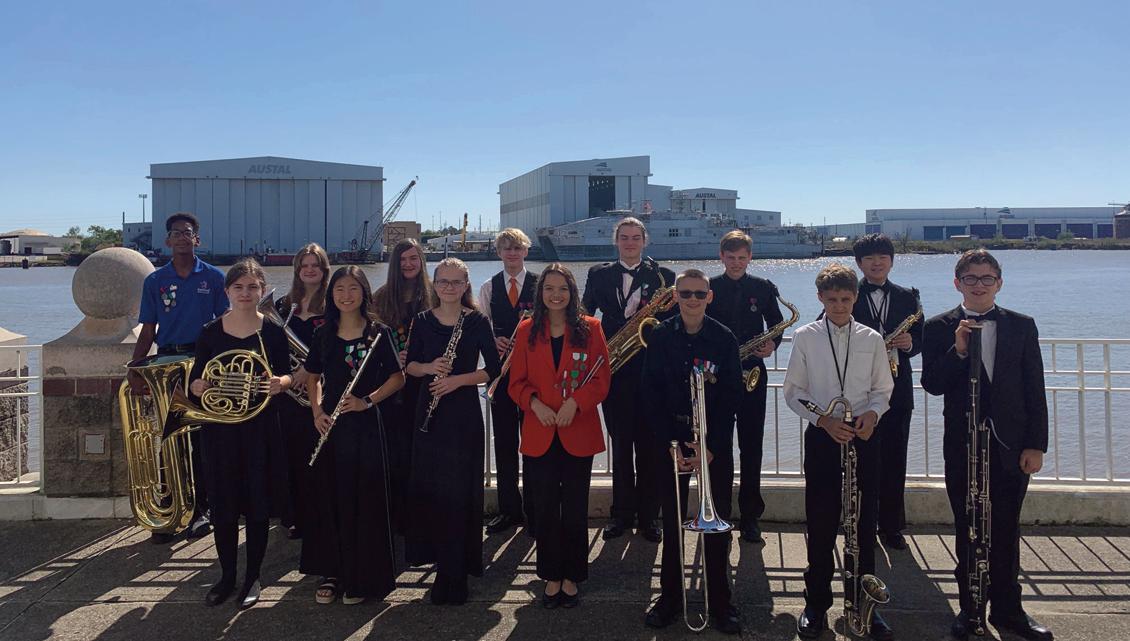
Bb Clarinet:: Jenna Owens, Decatur Heritage Christian School
Bass Clarinet: Blaise Gartland, Montgomery Catholic
Alto Saxophone: Jason Murong, Pizitz Middle School
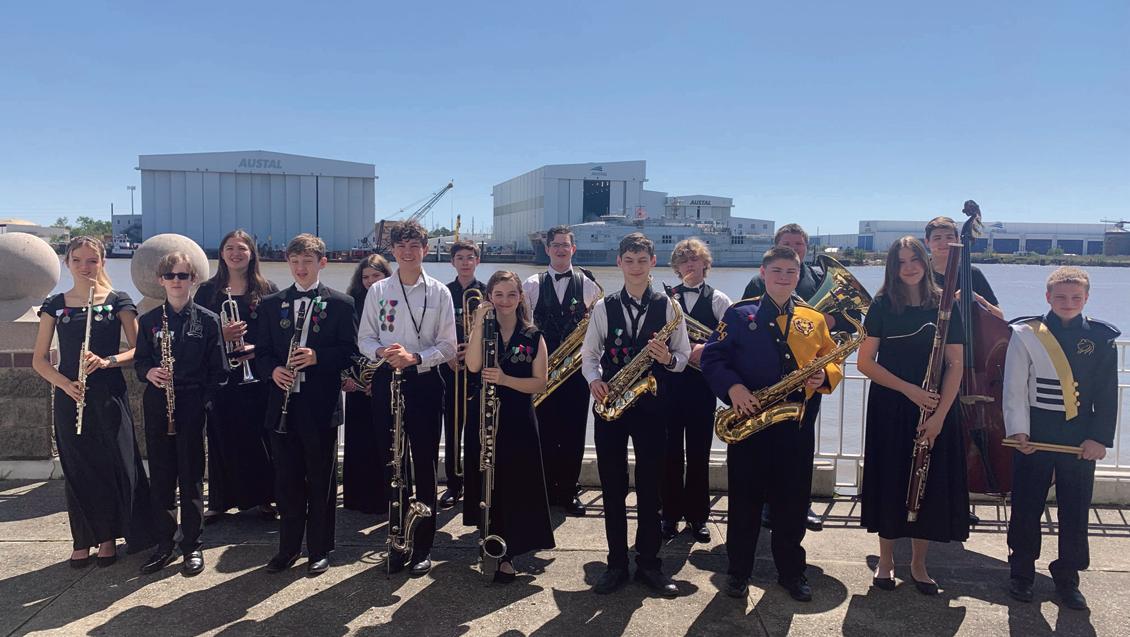
Tenor Saxophone: Gil Noland, Pickens Academy
Baritone Saxophone: Colt Riley, Pizitz Middle School
Trumpet: Caleb Wilson, Liberty Middle School
French Horn: Isabella Weber, Liberty Middle School
Trombone: Will Hayes, Montevallo High School
Baritone: Myra Walsh, Oak Mountain Middle School
Tuba: Keon Davis, Homewood Middle School
Percussion: Kiersten White, Alexandria High School
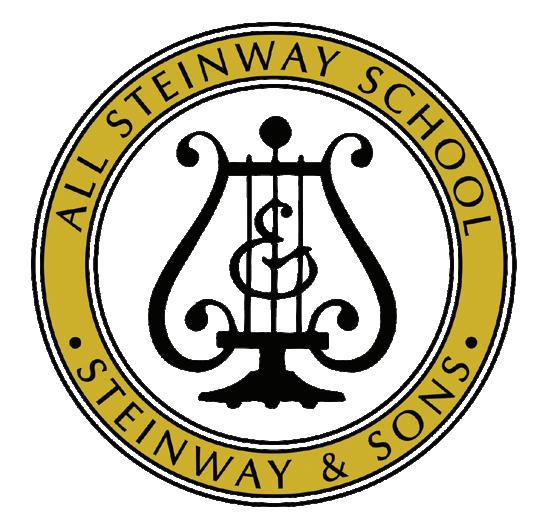
High School (SEUS) Band Clinic – February 3-5
Guitar Festival – February 18
Vocal Jazz & More Workshop – February 23-24
Flute Day – February 26
Clarinet Day – March 26
M.I.C. Check – April 7-8
TROY Jazz Festival – April 7-8

troy.edu/music
1-800-586-9771 • 334-670-3322
Cole

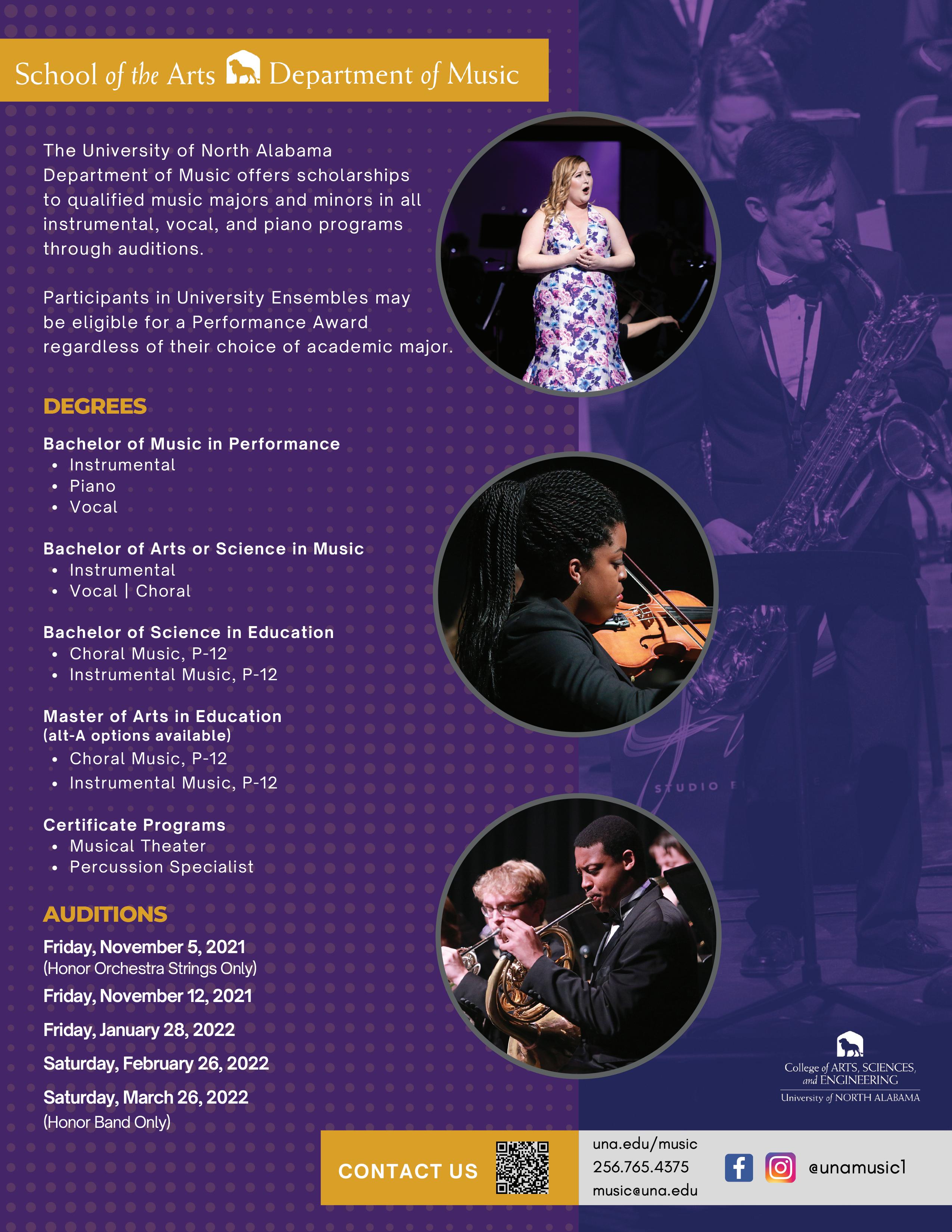
January
April 2, 2022 Colorguard

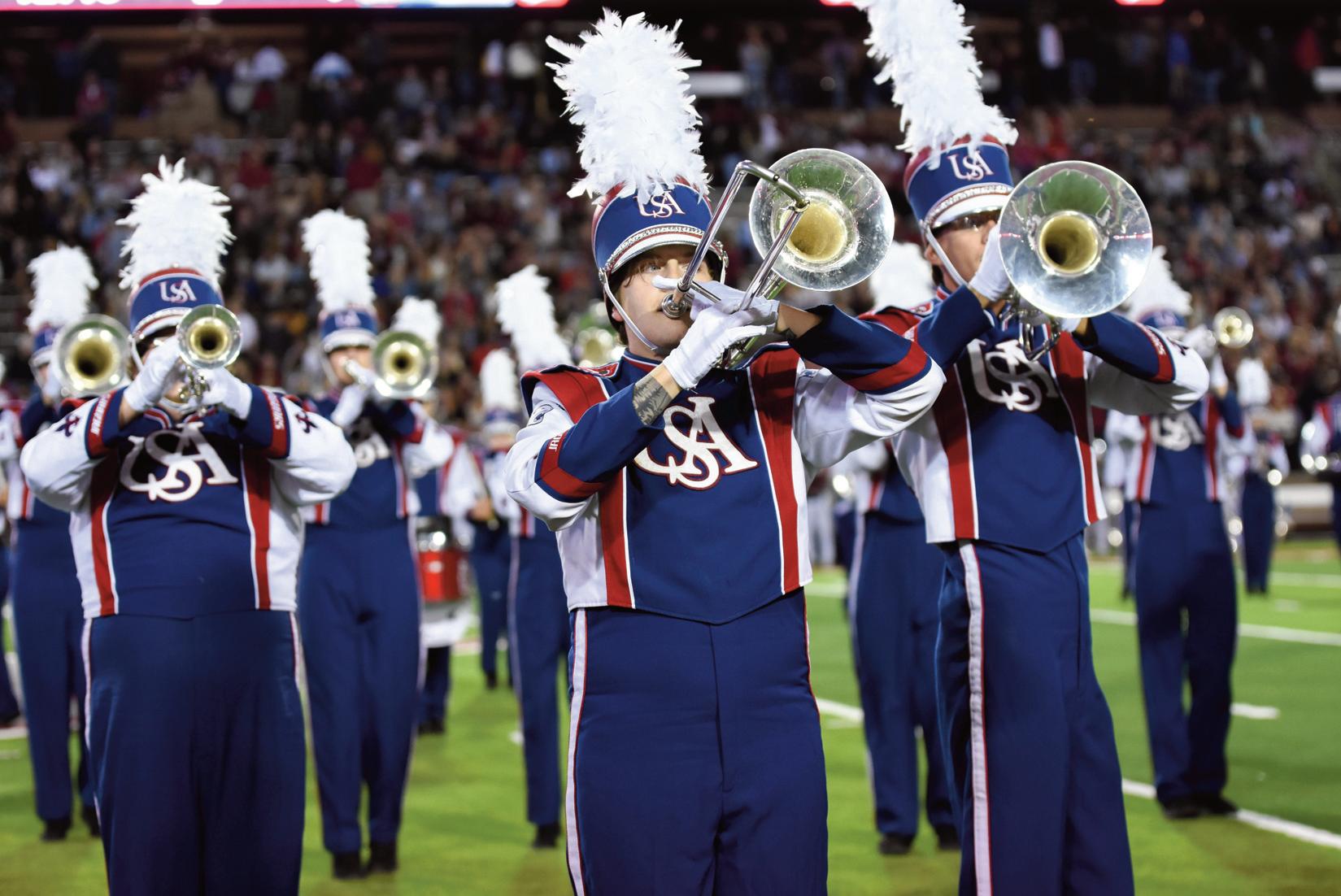

April 23, 2022



Unfortunately, 2022 has not offered us the relief we had hoped for throughout 2021. The year began with the threat of the Omicron variant but soon gave way to the outbreak of war in Ukraine, fueling yet another round of global destabilization. As is often the case, though, music and musicians have played an important role in our response to these trying times.
One example of our profession’s response to the humanitarian crisis caused by the Russian invasion of Ukraine is Brian Balmages’ Kyiv, 2022 – a sequel to his popular Moscow, 1941. Kyiv, 2022 seeks to reframe Balmages’ reverent setting of a Russian folk song in Moscow, 1941 as the aggressor’s theme,
countered by an uplifting pairing of the Ukrainian National Anthem and a hymn, “Prayer for Ukraine,” representing the indomitable spirit of the Ukrainian people. The grade 3 work is well scored, utilizing only two parts each in the clarinet, trumpet, and trombone sections and a large but scalable percussion section. Of the piece, Balmages writes, “Musicians familiar with Moscow, 1941 will undoubtedly hear the intentional parallels between the two pieces, and I can see Kyiv, 2022 being performed alongside or in place of Moscow. Certainly, it will spark a lot of conversations about humanity, history, culture, and more. I hope directors can use this piece to help students see how music really can help us relate to the world around us, and also to offer a
musical way to support the people of Ukraine.”
Another work that similarly captures the poignancy of this moment is Julie Giroux’s powerful Hymn for the Innocent. Composed in 2021, Hymn for the Innocent happens to have actually preceded the war in Ukraine, though its stirring message and Giroux’s intent for the work is a perfectly fitting response. She says, “Hymn for the Innocent is a tribute to all the innocent lives that are lost whether by accident, disease, or acts of violence. What has been lost by their passing is an infinite list of possibilities. What they could have been, could have accomplished or achieved and the holes left in all the lives they touched and would have affected surely is a sorrow above all sorrows. Loss is never easy but when loved ones are taken before their time the loss and grief seem to be compounded. This hymn is for them.” Hymn for the innocent is, in a word, stunning. The grade 4.5-5 work requires musical and emotional maturity, featuring long melodic lines and lush harmonies. The performance duration is between six and seven minutes, depending on the tempo, which should be fluid, sensitive, and expressive.
The pandemic and now this war have weighed heavily on all of us. How we respond matters to our students and peers, to the profession, and the world. Performing music that addresses these moments with reverence, uplifts others and gives our students and communities an outlet for experiencing and expressing peace and joy is so important at this time.
Peace,
Dave RagsdaleEditor’s Note: This article first appeared in the May/June 2011 Ala Breve
“You can’t teach an empty chair”: this is a piece of advice that I have heard many times in my career. Several attribute the quote to Lassiter High School director Alfred Watkins, and if you know Alfred, you are well aware that he has never suffered from a lack of chairs AND eager students to fill them! The focus of the next two installments of Tips That Click will be recruiting and retention. Several experienced directors have volunteered information that should help us all in our efforts to build successful programs.
Terry Ownby is the Director at Muscle Shoals Middle School,(as well as serving ABA as Recording Secretary) and has long had one of the largest and most viable programs in the state. His recruiting approach is a team effort of all the directors in the program and LOTS of parental involvement. “I think that we have to constantly “sell” our band programs in the community where we teach. I am always looking for ways to get our band program out of the band room and into the community. We perform at home middle school ballgames and a couple of basketball games in the Fall

along with 2 concerts. When we recruit our fifth graders, we bring them 3 classes at a time to the band room, use the King Music Assessment test and perform all the examples live with our directors. Once that is complete, we follow up with a parent meeting with all fifth-grade parents and a full fifth-grade class meeting with the counselor and Principal. We try to go over within a week of those meetings and have the Symphonic Band and Middle School Jazz Bands perform for the entire elementary school student body. The concert is fun, fast-paced, and engages the students. About a week after this concert, the forms are turned in to preregister for the next school year. We normally get about 30-35% of the grade enrollment in band the next year.” As for keeping them involved in future years, Terry elaborates: We stay involved with the kids throughout the school year and work to keep them engaged in what’s going on. When we get enrollment figured for the next year I spend time one on one with kids who aren’t signed up. Also, spend time talking with parents about the benefits of band and keep them involved in the activity. We normally lose 15-20 kids a year to normal attrition but gain 10-15

new 7th and 8th-grade beginners each year.”
Larry Cornelius served the Auburn City Schools as a junior high director for over 10 years, teaching primarily at Auburn Junior High School. The success of this program is legendary and goes back to a foundation laid many years ago. Larry described some of the keys that have long made the recruiting for this program so effective. “There are two things in particular that immediately come to mind. When it was almost time for the students to sign up for electives for the next year, we would always do a recruiting concert for the upcoming class that would potentially be in beginner band. We would schedule an assembly for the entire grade level, and I would have the top band play a variety of music, including typical band music as well as some popular music, movie themes, or fight songs. Sometimes I would use the jazz band. I would always talk to the kids in between pieces and emphasize how it was possible to do any other activity at the school (sports, cheerleading, academic teams, etc.) and still be in the band and would make a point of having the band kids raise
their hands if they were involved in these activities in addition to being in the band. When the prospective beginners would see this, it would help them to see how it was “cool” to be in the band since we had all kinds of students in the program. I would tell them how to sign up for band, and then ideally the counselors would then pass out the registration forms for classes for the students to take home at the end of the assembly. It was fresh on their minds when they went home that night, and they would excitedly tell their parents to sign them up! We would typically end up with 50% of the class population in the beginner band.” As to the subject of retention, he adds: “The biggest incentive I had to help with recruitment, as well as retention, was an annual spring trip to either Orlando or Williamsburg. So much was linked to this trip. Students had to pass off music to be able to perform with us in any concert, including the trip. Their behavior and grades (in band as well as in other classes) also had to be good for them to be able to participate. Our school system did not permit us to give grades for attendance at after-school practices and concerts, so our policy was that students must come to practice to be able to perform, and if they missed a performance, they were not permitted to travel with us on the spring trip. As a result, achievement and attendance were rarely a problem. Students would do anything it took to be able to go on the spring trip. It was such an established tradition that time and time again students would tell me it was the highlight of their junior high years. I know that many times students would join the band just to be able to go on the spring trip, but most of the time once they were “hooked” they realized that they loved band for other reasons and continued it throughout high school. It didn’t matter to me why they joined band as long as they joined because over the years I found that many great band students that stayed in
band long term originally may have started band for just for the spring trip.”
John Bradley, is President of Rho Chapter of Phi Beta Mu, and while he is currently retired from a distinguished career as a band director and administrator, you will still find him most days helping music students and teachers. He gives us two insights from his many years as a band director at Monroeville High School. “ I always gave a traditional type of recruiting concert but made sure that I had opportunities for the students to interact with me and the band members. I think one of the best things I used to do was have a student for the audience come up and “conduct” the band on a short piece. This really got everyone excited and had them buzzing. As for retention in the program, nothing helped the program at Monroeville more than my daily involvement with the feeder program. As the high school director, it was challenging trying to break away from the paperwork and responsibilities of that end of the program, but having the students in the middle school feel comfortable with my teaching style and the type of program they were moving to when they transitioned to high school really paid dividends. There are always a few kids that are “on the fence” and this seemed to help them feel confident in their decision to remain in band.”
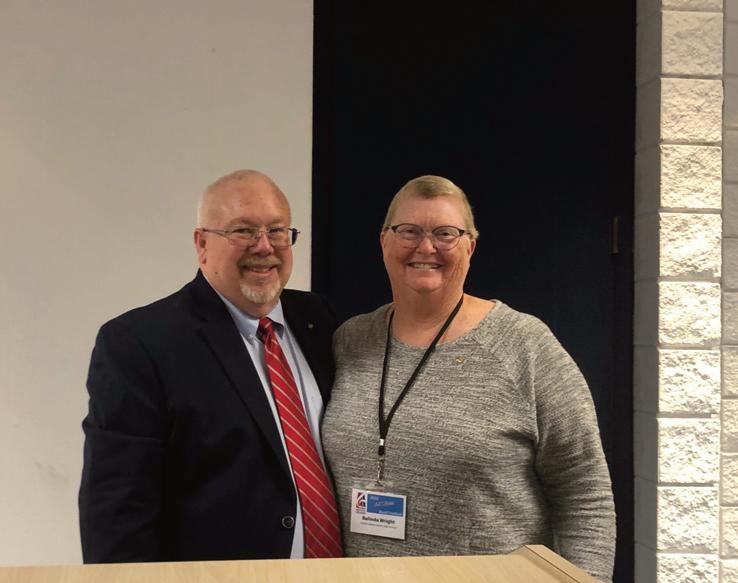
Chuck Eady is Past-President of the Alabama Bandmasters Association and has been a band director for over 30 years, currently teaching at Pleasant Grove High School in Jefferson County. He advocates using a recruiting concert, but with a few different “twists”. He takes the high school group and does two concerts – one for the entire elementary school and a shorter concert targeted specifically for the rising sixth-grade class. “For the second concert, we play more songs
that feature the beginning instruments, but I make sure that I allow enough time for the potential band members to ask questions of the CURRENT members.”. Eady adds:” I have found that while the elementary students will be polite and listen to me, the high school students definitely have more credibility with them and their answers inspire confidence that “taking band” will be the way to go!” As for retention, Chuck states: “ I have found that communication is the key. When I find that a student is considering leaving the program, I always investigate and try to find the reason behind this. If it is a financial problem, then we try to find a way to help the student arrange this so that they can remain in band. If there is a conflict with athletics, I try to work with the coaching staff to find out if the student has the talent to be a contributor. I always make sure that the student knows that the door is open to returning if the team does not work out”.
The members of Rho Chapter of Phi Beta Mu International Bandmaster Fraternity hope that this information is helpful and that you have your best year ever! Please email pemin@mac.com with any comments on this column or suggestions for future columns.
Colleagues,
I can barely believe another academic year is almost in the books. I wish you success as you plan final concerts, assemblies, and graduation performances for the year. I hope you have a restful summer break and are ready to return to class next year with renewed energy.
It was great to see many of you at All-State in March. I heard many positive comments about the event from students, parents, caregivers, teachers, and clinicians. It was an honor to be backstage as Diana Mayhall was presented the Frances P. Moss award. The energy of the concluding concert made it one l will never forget.

Congratulations to the choral students listed below for their remarkable achievements this year
District Outstanding Choral Student award recipients:
District I:
Kate Powell, and Brooks Moore - Florence High School - Kevin Reese, Director
District II:
Sarah LaGrone - Helena High School - Alice LaGrone, Director; and Marquez WelchHillcrest High School - Isabelle Page, Director
District III:
Mallori Finney - Mortimer Jordan High School - Margaret Heron, Director
District V:
Mia Wilson - Huntsville High School - Sarah Coleman-Gonzales, Director; and Bo Ferguson - Hazel Green High SchoolDebbie Flynn, Director
District VI:
Cole Ingram - Tallassee High School - Kelley Hill and Michael Bird, Directors
District VII:
Rebekah Chappell - UMS Wright Preparatory School - Michelle McCormick, Director; and Samuel Lowery - Fort Dale High AcademyJerry Wilkerson, Director
District Outstanding Accompanist award recipient: District V:

Jonathan Lee - Sparkman High SchoolShana Acray, Director
District Pat Blackwell Music Education Award recipients: District I:


Heather Medlin - Muscle Shoals High School - Peter Wilder, Director
District II:
Marquez Welch - Hillcrest High SchoolIsabelle Page, Director
District III:
Mallori Finney - Mortimer Jordan High School - Margaret Heron, Director
State-Level Winners
Outstanding Choral Students
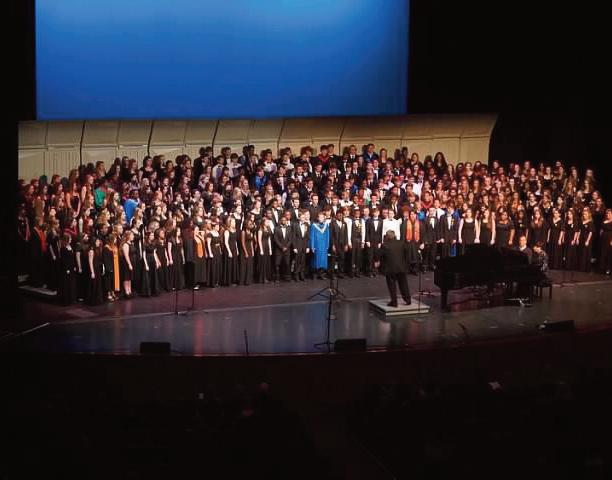
Sarah Lagrone
Bo Ferguson
Outstanding Accompanist
Jonathan Lee
Pat Blackwell Music Education Award
Mallori Finney
I offer sincere thanks to the AVA Board for countless hours of behind-the-scenes work to make All-State and all our events run smoothly for our teachers and their students.
District Chairs
Kate Dupuis
Alice Lagrone
Zachary Banks
Amanda Slay
Holly Luke
Marla Jenkins
Cameron Weiler
Chris Brown
Vice President: Paul Edmondson
President-Elect: Hilen Wilson
Secretary: Margaret Heron
Executive Secretary: Meg Jones
Webmaster: Jim Schaeffer
Every encounter I have had with these educators has shown me what it means to have a servant’s heart. It has been an honor
1946 Yale H . Ellis
to serve our state chorus teachers with this board for the past two years.
Looking to the future, I am confident that our vocal association will be in good hands with the leadership of Hilen Wilson and the new AVA board.
Warmest regards,
Randall Fields1972 Frances P. Moss
1996 Johnnie Vinson
1948 Walter A . Mason
1950 Vernon Skoog
1952 John J. Hoover
1954 Lamar Triplett
1956 Carleton K . Butler
1958 Mort Glosser
1960 Wilbur Hinton
1962 Lacey Powell , Jr
1964 G. Truman Welch
1966 Jerry Countryman
1968 Floyd C . McClure
1970 Jerry Bobo
1974 George Hammett
1975 Frances P. Moss
1976 S . J. Allen
1978 W Frank McArthur
1980 Paul Hall
1982 Lacey Powell , Jr
1984 Johnny Jacobs
1986 Merilyn Jones
1988 Ronald D. Hooten
1990 Ken Williams
1992 Dianne Johnson
1994 James K . Simpson
1998 Michael Meeks
2000 John McAphee , Jr .
2002 Tony Pike
2004 Becky Rodgers
2006 John Baker
2008 Pat Stegall
2010 Steve McLendon
2012 Sara Womack
2014 Carl Hancock
2016 Susan Smith
2018 Greg Gumina
2020 David Raney
There was a time when I belonged to a particular social media group designated for band directors. Eventually, I had to unfollow the group because I found myself getting mad at the questions and responses from some people. I thought to myself on many occasions, “you went to college and you earned a degree to teach band and you don’t even know how to do that?” Later, as I thought back on those “stupid” questions, I wondered what my younger self did back in the early 2000s before social media “experts” and before I was brave enough to reach out to other directors. I say, “brave enough,” because there was a time when I was ashamed to reach out for help. I was afraid someone would judge me much like I was judging the people in the social media group. I went to “Band Director School”; I should know this…If I ask for help it will let everyone know that I am a fraud and I shouldn’t be allowed to teach students. I am thankful I realized the problem with this mentality.
In this article, I would like to explore what I thought were some commonsense lessons I have learned over the years. Through this process, I have asked myself, “since when did our profession stop addressing these lessons?” I hope that this article will help some of the younger directors who, like me, were terrified to ask for help.
Every football game I have ever attended only has a 20-minute window for halftime. Common sense would dictate that each band would only have 10 minutes to perform their show. That 10 minutes means that set-up, getting onto the field, playing the show, and getting completely off the field must
occur in that amount of time. There are times when the officials are slow to start the clock, but you cannot always expect this to happen. There have been many times that I have had to have my students run off the field because the visiting band took too long to perform their show. Once, I was asked by a visiting director if he could practice his contest entrance because he was going to contest the next day and wanted to prepare his students. Of course, I agreed because I wanted to be helpful. The director took his band out into the parking lot and lined them up. When the clock reached zero and halftime began, he and his students were still out in the parking lot. They eventually marched into our stadium and down the sideline and out onto the field. Needless to say, they did not finish their contest show in their allotted 10 minutes. If you run into this sort of situation, and unfortunately you will, you need to have a plan to get your students off the field in time.
I have been guilty of using electronics in my halftime show. If you choose to do this, you must have contingency plans in place for when the electronics do not work even though they “always work at practice.” Remember, you only get 10 minutes to perform your show. It is not fair to the other band to take up their time just because you were not prepared.
When planning your show, field entrance, song lengths, the time needed to change props, and how you plan to exit the field are all things that should be taken into consideration. Taking two minutes or more just to enter the field does not leave a lot of time for your show. Have announcements read while the band is entering the field. Time your run-throughs during rehearsals. Recruit
parents to help with any props or electronics you plan on using. Be considerate of the other band.
Communicating with other directors
I would love to see this become common practice again. During football season, I like to call the band director of the school we will be hosting that week. I feel it is helpful for them to know the following information before they arrive on Friday night:
Where their band needs to park
• and which gate they need to bring equipment through. Where their band will be sitting
• in the bleachers.
• sideline.
We do not have power on the
Where they can store their pit
• equipment during the game. How their band will be coming
• on and going off the field. (This allows me to change something in my show if I can be more accommodating to them.)
Questions I ask when I am preparing for an away g ame:
• Are there any special
Is it your Homecoming Game?
• circumstances I need to be prepared for?
• the Third Quarter?
Do you play Taps at the end of
After the game starts and we have settled into the bleachers, I try to go over and introduce myself to the visiting director. I like to make sure they are good and see if they need anything else. We provide water to the visiting band. I check to make sure they have enough before I go back to my bleachers. (I know that not everyone can do this, but it is something we can provide.)
This is important for away g ames and those “big” trips. (Google Maps is your friend!) As stated above, communicate with other directors. If the director from the school we are traveling to on Friday has not contacted me by Tuesday, then I call or email them. I hate not knowing what to be prepared for at a Friday night football game. I want to be able to answer all my parents’ and students’ questions about the school we are visiting. When preparing for any sort of trip, I use Google Maps extensively. If we are visiting a school I have never been to, then I Google the school and look at Google Maps to see if the stadium is located at the school. (Our stadium is not.) Then I look at the route to see which direction we need to go. If it is a longer trip and I am expected to feed the band, then I look to see what kind of restaurants are available. We try to stick to restaurants that can accommodate the entire band at one time. We have even ordered pizza before a game and had it delivered to a church near the school we were traveling
to. We ate in the fellowship hall and used the large restrooms to let the students change clothes before the game.
When traveling, having a way to account for all the students is important. We use an Excel file that allows the students to sign up for the bus they want to ride. They know that when we load the bus, they must sit in the seat they signed up for. We call roll anytime we reload the buses. It is important to have a routine in place for calling roll. We have participated in parades in Chicago, Philadelphia, and San Antonio, and sometimes in those situations, you do not always have a lot of time to call the roll. Having an established routine the students understand and expect can make calling roll much easier and quicker.
This can be a headache for directors if you have not prepared for them. I would suggest creating a band constitution that is a guide to how tryouts will work, how students will be selected, how will the
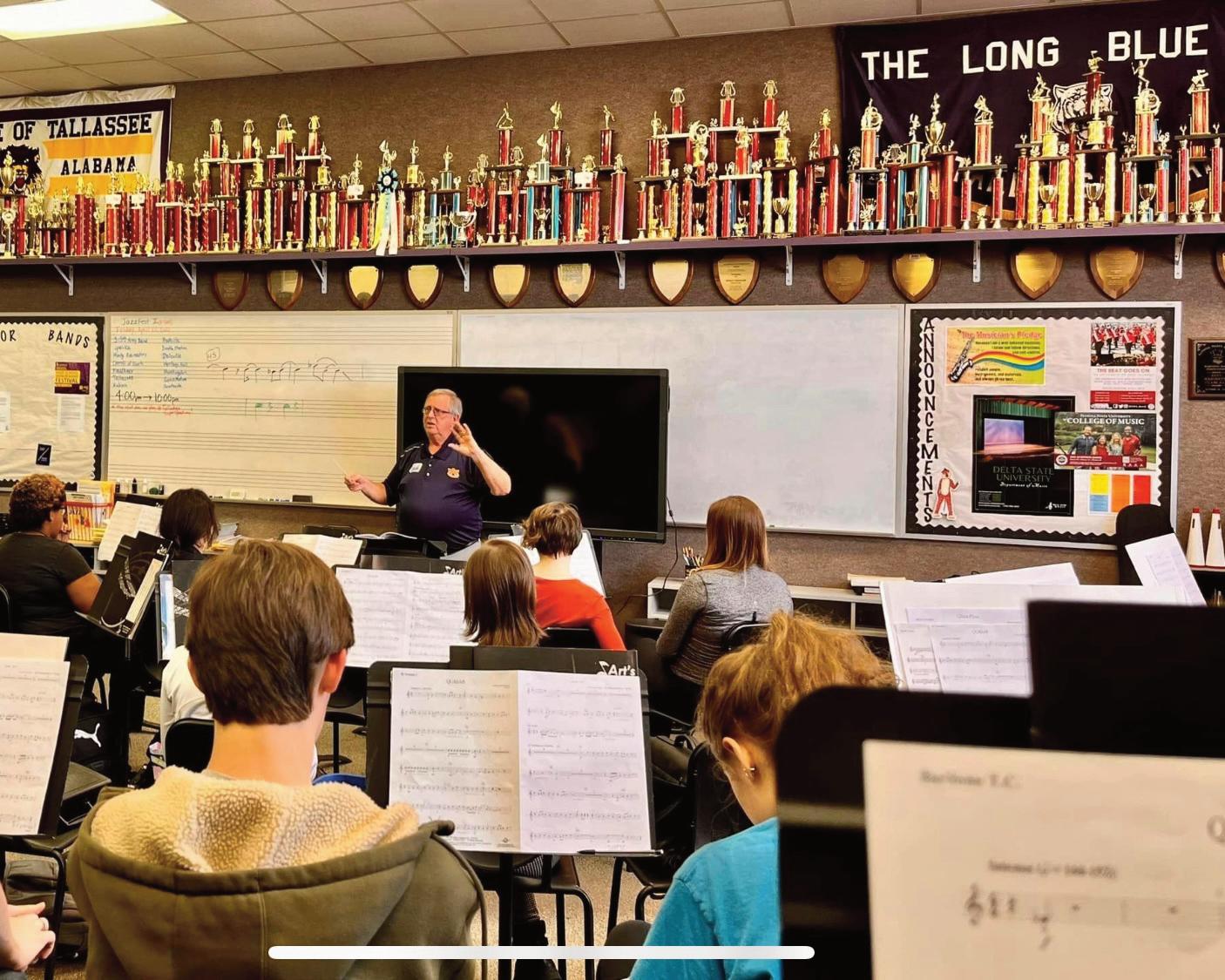
decision be made on who does not make the auxiliary unit, how will results be posted, and stick to it. Once you settle on a date for tryouts, contact judges as soon as possible and get them lined up. I would suggest doing this more than just one week in advance. If you have trouble finding judges, reach out to surrounding colleges and dance studios to find people who know baton or dance.
If you are new to a school check and see if there is a process already established. If so, then don’t change anything your first year. Speak with the principal and ask how tryouts have been run before. There might be certain rules already established by the school that you are expected to follow. For example, it is expected that we have accountants come and tabulate the scores. Whatever you do, be consistent.
Chances are you are not going to be able to play the music you played in college. When I was hired at my current school, I stepped into the position in mid-June and tried to quickly put together a show. I thought “surely these Seniors can play this,” but I did not think about the fact that the Freshmen, who made up most of the band, could not. I had an experienced high school director as our assistant director, but I was too stubborn to listen to his advice. (I’m sorry Mr. Bird, I should have listened to you on multiple occasions.) You need to be willing to step back and truthfully assess your band and determine what they can play. You need to take into consideration what your students and audience are accustomed to as well. If you are new to a school and the band has typically played pop tunes for their shows, I would not come in and expect them to jump on the latest craze from last year’s BOA finals. That is certainly a noble endeavor, but you first need to know your audience and take into consideration what level your students are willing to work.
You “can’t have a successful band program with a strong choir program” Most of my band is also in our choir. I’ll admit that there was a time when I resented the choir director at my school. He was very successful, and I thought that if he wasn’t teaching at the school, then I could do so much more with the band. Truth was, it was my own inadequacies that held the band back, not him. Once I realized this, I worked with him and we established some common ground between the programs and built our year around each other.
What does that mean? In the fall, marching band takes precedence and, for lack of a better term, is the focus of the music department. Once October comes and we have finished our last marching competition, the focus shifts to our fall musical production. MidNovember through December is our Christmas concert. The entire music department performs at one large concert together. During January and February, the focus of the department is on preparing for and competing in Show Choir. We even host our own competition. The concert band is still able to participate in Music Performance Assessment (MPA). However, due to the show choir practice schedule, all rehearsals for the concert band must happen during school. This took some time to get acclimated to, but I have found success. It just means that by December, I need to have already picked out my music for MPA and my students will have needed to sightread it before Christmas break. After MPA, March and April switch to spring concert preparations. The choir holds its concert at the beginning of May, and the band has its concert a week later. That leaves just enough time to prepare for our performance at graduation and even sightread through the music for next year’s halftime show before we get out of school for the summer. I must emphasize that you always need to be looking at what is ahead and prepare for that season. This is not a job where you can just fly by the seat of your pants.
I know that I will never have an Indoor Drumline or a Winter Guard at my school and that’s okay. The benefits my students gain from being so heavily involved in choir outweigh the cost of not having the other groups. We have found other avenues for the students to be involved. We use students to fill spots in the pit orchestra for the musical our choir performs each year and in our show choir band. Do what works for your students.
This by far was the hardest lesson I had to learn. When I first started teaching, I invited my college band director to come and work with my students. Robert W. Smith accepted the invitation and came to work with my students. I was sitting on pins and needles the entire time thinking, “please behave, please do your best, please remember the things I have mentioned in class, please don’t make me look bad…” In the middle of class, a young lady who was counting rests decided she wanted to eat a sucker. She got it out of her lunch box, unwrapped it, and started eating. Mr. Smith stopped teaching and asked her what she was doing, she removed the sucker slowly, and replied, “What? I was counting rests,” and continued eating. It was a very long time before I ever invited anyone to come and work with my group again. I was so embarrassed by the event and to this day it still haunts me. I would imagine that if I asked Mr. Smith about it today, he probably doesn’t even remember it, but I could not let it go.
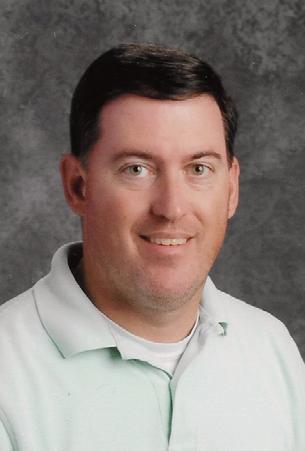
Approximately 10 years later, I finally got up enough courage to ask someone else to come and work with my group. I cannot say it was any easier sitting there watching the clinician work with my students. I still worried about trivial things like: “Is this clinician judging me and my teaching? What’s he going to say to other people after he leaves here?” I had to realize that the clinicians were not
doing that and having another set of ears listen to my students was the best thing I could do for my program. Having a clinician allowed me to move around the room and hear problems I had not noticed before. I made notes of my own observations, but more importantly, I learned from the clinician too. Clinicians want you and your students to be successful, they are there to help reinforce what you are teaching. Why didn’t I realize this earlier?
As mentioned in the opening of this article, I used to be a member of a social media group for band directors. Probably the main reason I unfollowed it was questions people would ask about repairs. It seemed so simple to me. Directors would post a picture of a screw and a clarinet and then ask where it goes. My advice to them and everyone: Don’t be afraid to take an old clarinet completely apart and then put it back together. Experiment and teach yourself and your students how to make simple repairs. We cannot always wait for the road repairmen to stop by. You would be amazed at what you can fix with a lighter and a hot glue stick.
The thoughts presented in this article have come from observations during my 20-plus years of teaching. They are things I wish I had known when I first started teaching and unfortunately had to learn the hard way at times. If I can impart anything to young directors, it is something my mother always told me, and that is to “be consistent.” If you can do that, a lot of the things listed here will work themselves out.

Orlofsky: There is a body of intriguing research that focuses on the act of remembering the past in order to imagine the future. So, I began to wonder how we could apply this same concept to what a profession can (and should) do to fully understand and appreciate the past. In other words, how can those in music education use the lessons learned in the past to help them predict future challenges and proactively respond with improvements and innovations? Dianne Johnson and I got to experience a few of these “foundational” past events together – so, I thought it appropriate to spend a few minutes remembering them in order to connect the dots we see for the future of music education.
Orlofsky: Let’s talk standards. Remember when the two of us traveled to Washington, DC, to participate in the drafting of the first set of national music standards? If I remember correctly, there were two delegates from each state in attendance and we spent the better part of three days hammering out the wording in what turned out to be the K4th grade music standards. I remember one LENGTHY debate about which methodology best teaches music literacy. What do you remember about that experience?
Johnson: I remember the discussion beginning with the concept of sequencing. I specifically recall a
rather intense debate regarding when the treble clef should be introduced to students! However, I think those discussions were necessary for us to conclude that when writing standards for the entire United States, we had to take a much broader approach.
Orlofsky: The task of writing music standards for the entire country was uncharted waters and quite daunting. And I know I felt a greater responsibility to “get it done right” because we were also trying to make sure that music remained in the wording of the Goals 2000: Educate America Act legislation.
Johnson: Being included in Goals 2000 by the title - MUSIC (not just in generic terms of “the arts”) was probably the greatest advancement in music education since the efforts of Lowell Mason in Boston in the mid19th century. As members of the National Standards Committee, we were charged with the task of creating clear and measurable standards concerning what every student in America should know and be able to do in Music. This was a huge responsibility and it was imperative that the standards be quality standards that would stand the test of time.
It was also our hope that the standards selected would - once and for all establish the rightful place of music education as an integral part of the total curriculum. Music for its own sake - not just as a way of reinforcing concepts in other subject areas! Of course, we want our students to have a well-rounded education where they learn to see and understand relationships throughout the curriculum. However, and I must addunfortunately - I continue to hear and read remarks that lead me to believe that in some professional circles we haven’t quite gotten away from promoting the ancillary value of music as justification for inclusion in the curriculum. I believe it is time to move forward and be very careful about reducing the importance of music to feel-good sound-bite slogans.
Orlofsky: It was such a revolutionary and daunting task that the arts education communities undertook. I sometimes re-read that original standards document1. I firmly believe it was the foundation upon which all subsequent standards documents rest. Didn’t we also spend part of our time on that trip on music advocacy efforts with our state representatives/senators? This inaugural visit served as the first in what turned out to
1 National Standards for Arts Education: What Every Young American Should Know and be Able to Do in the Arts. This volume contains content and achievement standards for music, dance, theatre, and visual arts for grades K-12. Cooperating entities: American Alliance for Theatre & Education, MENC, National Art Education Association, and National Dance Association) under the guidance of the National Committee for Standards in the Arts. (January 1994).
be regular advocacy outreach by MENC (NAfME) to those serving on Capitol Hill. What do you remember from that experience?
Johnson: I remember being overwhelmed and frankly unprepared to meet this challenge. The thought of being the representative(s) responsible for convincing our political leaders that music (the arts) was fundamental to a child’s education was daunting. MENC had prepared talking points for us, but what I found more convincing was my passion and anecdotal stories of the positive effect music had on the lives of students.
I also remember arriving at the appointed time only to be told that the Senator (name withheld) wasn’t available but we could speak with one of his aides who would then convey our message to the Senator. As we were preparing to leave, (after attempting to plead our cause and not being convinced that we
had accomplished our goal), I asked the assistant to give a personal message to the Senator. It just so happens, that a few months prior, my husband (Don) had assisted an elderly couple who had run out of gas on the side of the road. The couple turned out to be the Senator’s parents. (True story). Interestingly enough, we were asked to wait a moment, and all of a sudden, the Senator’s schedule opened up. He came out, had a conversation with us, and even posed for a photo. Sometimes, you have to be persistent to get your message to the right person.
Orlofsky: Our challenges as a profession, National Content standards, and advocacy efforts look different now than when they first came on the scene, but the intrinsic value and power of music education remain the same. What do you see in the future for us as a profession and how can we best “be the change we want to see”?
Johnson: This is a difficult question. We have made strides in so many areas and yet I become so frustrated when I realize we are fighting some of the same battles we have been fighting for the last 40 + years. However, we absolutely cannot give up. We must remain ever vigilant. As music educators, we are master teachers and become immersed in the teaching and the learning of our students. But we are not always masters at advocating for the music education of our students - not just in our local schools or school system but also at the State and National Levels. I am so proud of the young leaders in Alabama who are taking on the challenges of advocacy, but I believe it must be the responsibility of every music educator (even those of us who are retired) to be actively involved in promoting what is best for our students.

Orlofsky: So, let’s talk about the importance of mentorship (since you went there) and how best to bridge the gap between seasoned teachers and those just entering the field.
Johnson: I don’t think we should live in the past or cling to the old ways of doing things. However, it is important to not abandon tried and true methods, approaches, and techniques that remain effective. Today’s teachers have an incredible opportunity to learn from the knowledge of experienced teachers while grasping amazing opportunities in technology. Perhaps a pairing of old and new would have awesome results and mutually benefit both novice and experienced teachers.
Orlofsky: Agreed. This has been implemented in some states but I would love for it to be more formalized and go wider and broader in scope. And I know that I learn ALL the time from novice teachers – that definitely needs to be a two-way street and one that we travel much more often. I know my pre-service teachers have been instrumental in nudging me toward the use of new technologies.
Johnson: The technological advancements of [even] the last decade are vast and nothing short of amazing. And honestly, without these tools, music education would have suffered even further during the pandemic. Although these new approaches to teaching were not ideal and even frustrating at times, at least they allowed us to stay connected to our students. Modern technology is a fantastic tool and should be a part of our classroom instruction. But never forget - children need to sing, play instruments, move, speak, listen, read— actively experience music.
Orlofsky: Trying to bridge the educational needs of both K-12 students and pre-service music educators while constructing meaningful content during the virtual worlds necessitated
by the pandemic was a challenge—I kept coming back to that adage that necessity is the mother of invention. So, my students and I set out on an adventure to deconstruct the “norm” (how we usually conducted field experiences) to create authentic, creative, and meaningful field experiences with as many interactions with kids as technology would allow.
Johnson: Your students were fortunate to have you lead them in this effort that necessitated thinking outside the box. I found myself (although retired and no longer actively involved in the classroom) searching for online professional development opportunities to try and stay up-todate on techniques that music teachers were using to teach content and skills while trying to remain connected with their students. I was introduced to various equipment, software, and programs to aid teachers in this endeavor - but frankly, I would have needed a lot more instruction to actually use these tools! Nevertheless, I was so impressed with the way teachers were embracing these tools and techniques and sharing their successes (and failures) to assist their fellow educators.
I was also blown away by the many ways music teachers stayed connected to their students - to continue to offer the emotional support that so many students need and find only in the music classroom. Time for the study of music theory and history as well as opportunities for students to express themselves was now possible. Performances changed drastically - Virtual Choirs, outdoor venues, social distancing, and the use of masks - to name a few. And interestingly, I think there was also a shift in focus. With less pressure to “perform,” the focus seemed to change from trying to prepare the “perfect concert” to an approach that included more emphasis on the
learning process and the emotional well-being of the students. Although I believe strongly in helping students to prepare for the best possible performance experience, there is so much to be learned in the process. We sometimes get so wrapped up in the “final product” that we overlook the numerous learning possibilities along the way.
Orlofsky: I totally agree. Performance opportunities are a part of what we are privileged to do. But the REAL magic happens in rehearsals! I hope we never lose that focal shift, and never take those musical moments for granted.
Diane Orlofsky is a Professor of Music and Director of Choirs at TROY University where she has taught for 36 years. She is the 2016 recipient of the AMEA Lacey Powell Outstanding Music Educator award.
Dianne Johnson has over 40 years of experience teaching music to students of all ages and serving in administrative roles as a Music Supervisor and Director of Arts Education. Throughout her career, she was actively involved in AMEA and MENC (NAfME) and held offices at both the state and national levels.
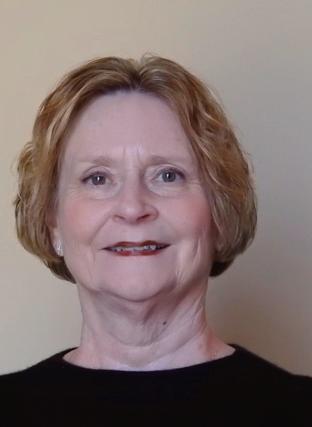


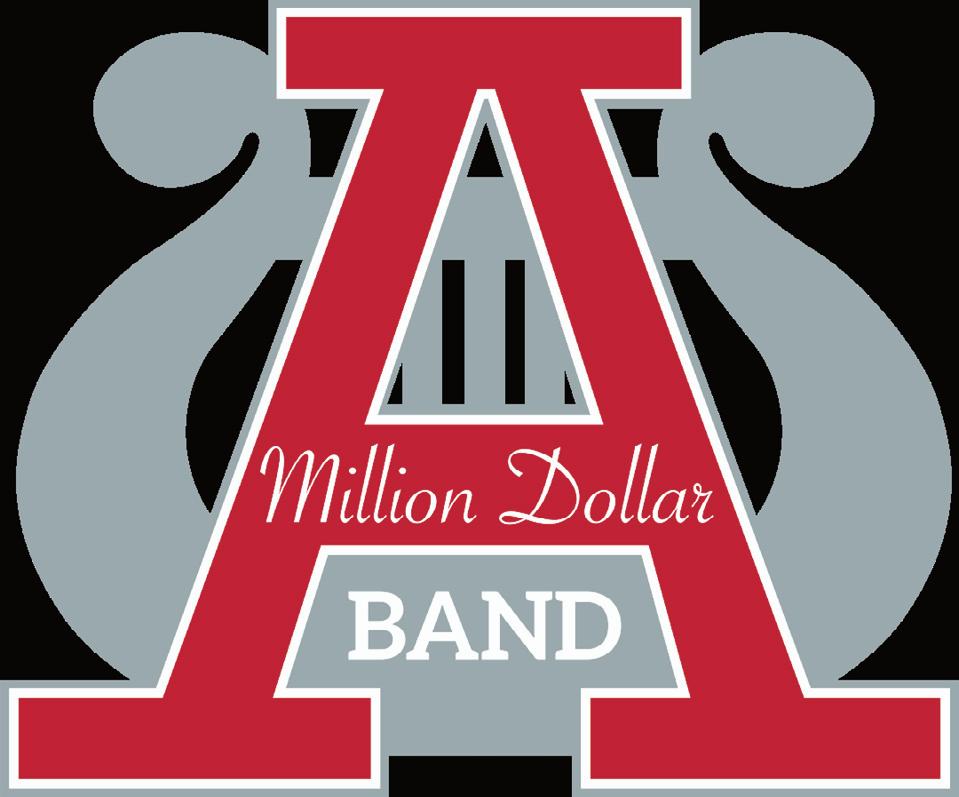
directors to inefficient workarounds with their beginner horns and make a case for starting on the Bb horn.
It’s a Trumpet
It is the first day of playing instruments in a beginner band. After weeks of rigorous instruction in the fundamentals of music reading, developing a steady beat, and generating a consistent tone on the mouthpiece, the students are eagerly awaiting instruction from their teacher to begin assembling their instruments. The trumpets place their mouthpieces on their lead pipes and play their first note – a resounding open C or G. The teacher calibrates the students’ embouchures by having them manipulate hot and cold air, high and low tongue arch, and “ee” and “oo” syllables to switch between the two notes. They successfully repeat this process for each brass instrument, generating their first concert Bb or F. Now it is the horns’ turn. They set their embouchures, prepare for success, and…honk! A cacophony of notes fills the room. Henry plays an open C, Akari an E, Saddiq a Bb, and Jordan, Dae-Jung, and Sasha seemingly play every note of the harmonic series. Despite their best efforts, the teacher fails to get each student on the same note, leaving the young hornists frustrated and disappointed that they were not as successful as their friends.
Band directors have long grappled with starting horn students in a manner equitable with students on other instruments. To combat the mercurial nature of the instrument, many seem to opt for stopgaps in their pedagogy. Some choose to start students on trumpet and switch them to horn after “developing a sense of pitch.” Unfortunately, the trumpet and horn embouchures are so distinct that switching students from trumpet to horn can have long-lasting detrimental effects on embouchure and tone without proper guidance. Others incorporate rigorous aptitude testing in their recruitment process to ensure only students with inherent music skills (e.g., pitch recognition) are placed on horn; however, this practice limits student choice. Numerous beginning band method books offer exercises putting students in harmony with the rest of the band (usually a fifth), but directors should ensure that their hornists are given sufficient time playing in unison with the ensemble to develop intonation, tone, and blend. These methods operate on the premise that the horn is an inherently troublesome instrument that is difficult to learn and even more challenging to master.
In reality, the horn is no more challenging than any other brass instrument. The problem is that we have been hindering our young horn students with the most challenging version of the horn for decades – the horn in F – even though a more beginner-friendly instrument is readily available – the horn in Bb. The purpose of this article is to address common misconceptions that have led band
Directors who start their horn students on trumpet often cite the small size of the horn mouthpiece and the difficulty of the horn’s harmonic series. However, the design of the two mouthpieces is unfortunately too distinct to function as analogs of each other. The trumpet mouthpiece has a thicker rim with a shallow cup that quickly tapers towards the shank. The horn mouthpiece has a thin rim with a deep cup that gradually tapers towards the shank. Furthermore, the trumpet mouthpiece sits approximately in the middle of the embouchure, pointing forward, with 50% top lip and 50% bottom lip. In contrast, the horn uses 2/3 top lip and 1/3 bottom lip, but also requires setting the embouchure correctly. To properly set the horn mouthpiece, have the student hold it perpendicular to the ground with the rim resting just underneath the pink of their bottom lip. Then, tilt the mouthpiece until it touches the top lip, resulting in a downward angle and a 2/3 top lip and 1/3 bottom lip ratio.
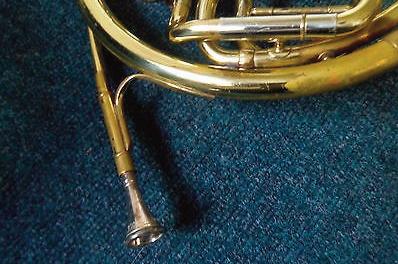
An overly tense embouchure is a common concern for brass players, but especially for hornists. If students are struggling to “fit” their horn embouchure into the mouthpiece or cannot generate a clear buzz, they are likely working too hard. To overcome embouchure tension, have students hold a balloon and fill it with air. Then, have them do the same task without holding the balloon. Without the security of their hands, the students will puff their cheeks and struggle to push air through the balloon or they will naturally firm their corners and direct the air forward. Guide the students until the second outcome occurs. Then, have students blow air without the balloon, keeping the same embouchure shape with firm corners. Making an OK sign with their right hand, have the students blow air and slowly move their hand towards their embouchure. As the circle of the OK presses into the embouchure, a buzz will naturally occur. Repeat this process with the mouthpiece. Then, have students blow air through the mouthpiece as they connect it to the horn, and a buzz will occur once connected. Developing a relaxed embouchure from day 1 is key to effective brass playing. An efficient buzz is not a strength activity, but an air activity. Surprisingly, very little tension is needed to produce a pitch on the horn. The back pressure caused by the lead pipe will create a natural buzz through the Bernoulli Principle; therefore, hornists should focus on firm corners, quality airflow, and let the horn do the work for them!
Look no further than the harmonic series to understand why the F horn is a challenging instrument for novices and professionals alike. Shown below is the open-valved harmonic series of the F horn. The horn is one of the few instruments that can generate the entire harmonic series with its fundamental. The typical beginner trombone/euphonium tessitura operates between harmonics 2 through 4 (tuba an octave lower). The trumpet’s harmonic series is an octave higher and cannot generate the fundamental pitch; therefore, the second harmonic starts on C4.
With an interval of a fifth between their second and third harmonics, trumpets, trombones, euphoniums, and tubas have a wide margin of error when targeting a specific harmonic. A

trumpet fingerings despite being pitched in the same key. Bb horns still read in F, which is written a fifth above its sounding concert pitch; therefore, Bb horn fingerings are the same as euphonium. For example, C4, D4, E4, F4, and G4 on the horn are concert pitches F3, G3, A3, Bb3, and C4, respectively. The Bb horn and euphonium fingerings for these notes are identical (shown below). Therefore, directors should avoid giving their students trumpet fingering charts for the Bb horn or distributing trumpet or treble clef euphonium parts.
beginner horn’s tessitura, on the other hand, generally sits between harmonics 4 and 8 – C4 and C5. This means the open-valve series can generate C, E, G, Bb, and C – a narrow margin of error for beginning students.




The Bb horn is smaller than the F horn; therefore, its harmonic series (shown above) is raised a perfect fourth. The beginner tessitura is much more manageable with harmonics 3 through 6 and a perfect fourth separating C4 and F4. This margin of error does not match the perfect fifth of the other brass instruments but significantly lowers the difficulty compared to the major and minor thirds of the F horn. By incorporating the other valve series, the C scale (Concert F) becomes more accurate on the Bb horn (shown below).
Band directors should consider these options when purchasing or recommending horns for their students. The longrunning practice in many programs is to start beginners on the single F horn, which comes with the pitfalls previously mentioned. In contrast, the single Bb horn is lighter and often slightly cheaper than the single F horn, ideal for small children. Some quality single Bb horns include Alexander 88 and Yamaha YHR-32II. Some advanced models, such as Alexander 90 and Paxman 10, include a stopping valve that adds a ½ step of F horn tubing. The stopping valve offers more accuracy for stopped technique on the Bb horn by pulling the additional tubing as far as needed for more control over the pitch.
Playing on the Bb horn is like using bumper lanes at the bowling alley, helping novices avoid the gutter, and guaranteeing pins will fall. Better yet, it puts young hornists on roughly equal footing as their brass peers, meaning concerns about starting on trumpet, getting students with “good ears,” and using exercises in harmony become much less relevant. Students are most likely to continue in their band when they make good sounds, frequently achieve proximal goals, and feel like they are on par with their peers. With all the clear benefits of the Bb horn, why do instrument manufacturers continue to market the F horn?
The truth is that skilled hornists need to use both sides of the horn. The F horn is a beautiful instrument with a rich tone and solid intonation in the instrument’s low range but struggles with accuracy and intonation in the middle and upper range. The Bb horn offers richer tone and accuracy in the middle and upper range but lacks the F horn’s low range depth of tone. As hornists mature, they learn to navigate 14 horns (F side valve combinations: 0, 2, 1, 12, 23, 13, 123; Bb side: 0, 2, 1, 12, 23, 13, 123) and discern how to take advantage of the fingerings that provide the best intonation, action, and accuracy across the harmonic series. Furthermore, the larger size of the F horn makes it ideal for playing stopped technique, as the pitch raises exactly ½ step (hornists play notes ½ step down to compensate). The Bb horn is generally not recommended for stopped technique (except above C5), as the pitch raises approximately ¾ step.
As an additional disclaimer, Bb horns do not share
Regardless, band directors should feel comfortable starting beginners on Double F/Bb horns and focusing on the Bb side (thumb-trigger). This allows the director to push students towards utilizing both sides of the horn whenever they have reliable accuracy, air support, and tone quality. Double horns can cost $1000-$3000 more than a single horn and are much heavier, so directors should always consider their budget and the size and strength of their young students.
I should add that starting on the F horn instead of the Bb or double horn is not a “death sentence” for beginners. Many successful hornists started on the F horn and continue to this day. But misconceptions surrounding the difficulties of the F horn have led directors to workarounds they would not otherwise use for other instruments. Consider how many more hornists there would be if their beginner experiences were not frustrated by improper embouchure technique, note inaccuracy, or switching from other instruments. Starting on Bb horn puts students on equal footing, allowing more students to achieve the same early successes as their brass peers, enjoy their instrument, and stay in their band programs longer. The world needs more horn players and using the Bb horn is one way to make it a better place!
Russell Greene is a Ph.D. candidate in Music Education at the University of Alabama. As a graduate teaching assistant for the Music Education Department, he teaches methods courses and coordinates the Basic Music Skills courses. Mr. Greene is the former Director of Bands at Trinity Presbyterian School in Montgomery, AL, and was the Assistant Band Director at Oak Grove High School in Bessemer, AL. He is an active composer and arranger, writing halftime shows and chamber works for schools throughout the southeast.
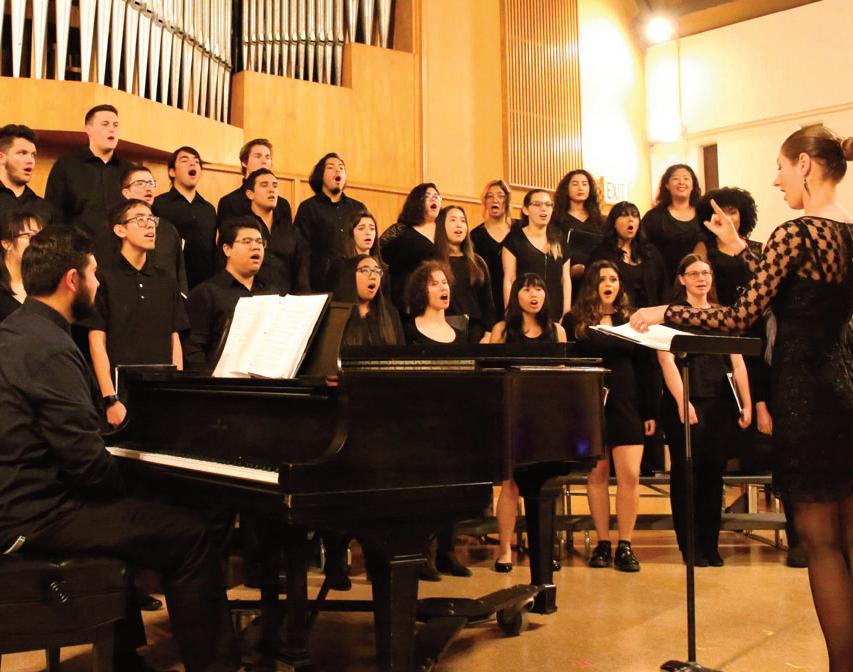
Here are three choral compositions with piano accompaniments that provide varying technical and musical challenges. Too often, pianists are instructed to play under the choir dynamic level which often leaves the pianist feeling restricted or which results in a lackluster performance. There are certain choral compositions that are written well enough that the piano part provides natural support for the singing and does not interfere with the voices. With some exceptions, such interference often occurs when the piano part doubles the choir parts or when the piano notation remains in the same octave as the voices. The compositions given below have skillfully written piano accompaniments that allow the pianist to play freely without fear of overpowering the choir. The accompaniments for each of these songs require a sensitivity along with the ability to perform a wide range of
dynamics and articulations. The advanced pianist will enjoy the challenge of playing these songs, and the choral ensemble will feel well-supported.
Laudate Dominum (SSA & piano)
Z. Randall Stroope
Latin text, fragment from Psalm 112 Walton Music
Duration: Approximately 3:35
The publisher’s description of the song could not be more succinctly accurate: “Vigorous and demanding, with a strongly rhythmic accompaniment.” Additionally, there are several elements from which the choral director can glean some good teaching tools. For starters, I believe this composition is great for developing energetic singing and for reinforcing rhythmic accuracy in phrasing. Other elements include compound meter, changing meter, vocal agility, dynamic contrasts, phrasing, and the importance of distinct articulation.
Stroope skillfully assigns interesting motifs to each separate voice part, combining them to create a lilting and spirited setting in the opening and closing sections. In contrast, the B section is more quieted and somber with lovely lyrical lines that move in a mostly stepwise manner. The return of the A section is introduced by a wellpronounced piano accompaniment, as it was in the beginning. The piano provides support for the voices and does not get in the way of the singers, thus removing the need for the pianist to overly compensate by trying to balance with the choir. The pianist should aim for clean articulation with careful pedaling.
Text by Friedrich Rückert (adapted)
Hal Leonard Corporation
HL 00245040
Duration: Approximately 4:00
From the Andrea Ramsey Choral Series, the composer indicates that the text is an adapted English translation of the German poem “Du meine Seele, du mein Herz.” Voice students and voice professionals will recognize the familiar German text from Robert Schumann’s “Widmung.” Composer, Dr. Christopher H. Harris, who is director of choirs at Arkansas Tech University, provides a complementary piano accompaniment that supports a beautiful melodic line. The voices sing the first verse in unison, then in harmony for the second verse. The third verse is unaccompanied during the initial phrases, and swells to a strong forte with accompaniment on the text “That you love me makes me worthy of you.”
The melody lies in the mid-vocal range making it accessible for TTBB singers of all ages, especially high school and beyond. One of the challenges presented in the composition is for the singers to make a “heart” connection with the text, and finding a way to demonstrate that understanding in a vocally sensitive manner through compelling phrasing without losing energy in the voice. The song runs the gamut of dynamic changes, so the singers must resist the tendency to lose breath energy during the softer phrases. In my assessment, the accompaniment is suited for medium-advanced pianists who can provide strong support during forte dynamic levels and who can shift to soft dynamics with sensitivity and without losing momentum.
René Clausen
Text by Lewis Carroll Santa Barbara Music Publishing, Inc.

SBMP 528
Duration: Approximately 4:15
Clausen sets the classic poem to music with a wide range of intensity. He treats each verse with careful intent to convey the spirit of the text being sung. The piano accompaniment complements the text with various harmonic colors and rhythmic interest. From verse to verse, Clausen assigns the melody to different voice parts to underscore the intensity (or calm) of the text.
Although there are meter changes throughout the song, triple meter is the dominant feel. To that point, Clausen uses meter as a complement to the text. The accompaniment enriches the story and requires a pianist who can convey the magnificence and the slaying of the Jabberwocky.
The vocal ranges and divisi make this choral octavo best suited for large choirs
THREE TRACKS: Choral Elementary Instrumental
THREE SUMMERS: Complete the MME with a Combination of Summer and Online Courses

no younger than junior high school age. It is accessible to advanced junior high and high school choirs. The highest soprano note is G5, and the lowest bass note is E2.
The piano accompaniment begins in a somewhat lullaby manner. It grows in agitation and force as the piece moves forward. Clear articulation in the piano part makes for a riveting experience for the singers and listeners.
 William Powell Director of Choral Activities Auburn University
William Powell Director of Choral Activities Auburn University
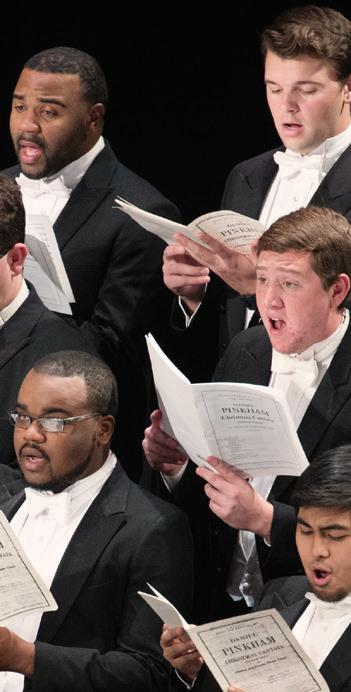
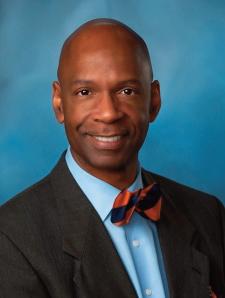
WWW.MUSIC.MSSTATE.EDU/MME
MSU’s Master of Music Education program is both unique and practical, designed to 昀t into the busy lives of current music teachers. It is a hybrid program (a combination of summer and online courses) designed to support music professionals in the advancement of both their pedagogical and musical skills. Included in the degree is performance practice, conducting, pedagogy, curriculum, music theory, history, and the essentials of research in music education.

Education is a lifelong process and does not stop once a student leaves a classroom. I have students I have worked with throughout my years that still reach out to me with questions. I am a lifelong student myself and strive to learn more every day. Generally speaking, I’m not practicing for a specific piece or gig. I’m practicing to improve both musically and technically. Because of that, my practice prepares me for unexpected situations. If I just wanted to play lead trumpet and that’s all I shed, then that’s all I would be expected to do. The same would apply to any type of playing: rock, jazz, orchestral, soloist, and anything else you might consider. Thinking broadly about practicing can enrich personal growth and open doors of opportunity. If you practice for technical growth and apply that to ALL music, the possibilities are endless.
I would suggest that we all start a practice in the woodshed from a place of inspiration! Who are your heroes on your instrument? Listen to them! Listen to other instruments and vocalists as well! We should approach our instrument daily, but if we approach things as a normal “routine”, there is a danger of it becoming a mindless activity that we are not engaged in or growing from. Sure, we brush our teeth every day, but I would guess that many
of us are not completely engaged when brushing each night. Listening is a huge component of this music. It is an aural tradition! Allow yourself to remember why we got into music in the first place. Listen to that artist or group and then pick up your instrument and work. I would venture to say that you will practice with more intent if you start from a place of inspiration. John Clayton emphasizes listening so much that he suggests the following practice when rehearsing your group:
Play the recording of the chart for the group.
Play the recording of the chart for the group again and tell them to listen to their specific instrument.
Pass out the chart to the group. Play the recording again and have them follow along with the music.
Play the chart!
While we are on the topic of listening and working from a place of inspiration, I’d like to stress the importance of attending live concerts and jam sessions! Whether we are teaching K-12 or higher education or a professional musician, we can sometimes be the biggest Hippocrates. I just got back from adjudicating a jazz festival in Las Vegas and working with a few colleges. All of
the groups I was working with had a big concert coming up. I asked them, “Are you hoping a big crowd attends your concert”? Of course, they said, yes! I then asked them, “When is the last time you went to a concert”? There were not many in the room that could say yes. We must remember that we are all musicians and should encourage each other. Advocacy, encouragement, education, comradery, inspiration, and the opportunity to network are just a few of the reasons to attend a concert. I also remember the days of Tower Records and spending hours going through albums. I would encourage folks to buy music too! Again, remember why we started this discipline in the first place.
I just saw Kenny Rampton in Vegas and he was talking to students about the five things to consider when approaching music on a daily basis. I will share some of his thoughts and some of my own. Many of these ideas could be applied to any instrument:
Sound – The most important technique we perform on our instrument. Soft long tones are crucial in “carving out your sound” each day. Kenny Rampton starts his day by blowing the lead pipe before long tones. Some would encourage mouthpiece buzzing for better initial response and there are many routines out there that deal with

222response and sound.
Fingers – Technique! Kenny Rampton, as many do, uses Clarke Studies to work finger technique. He stated that if you are rushing through the exercise, you are not reinforcing correct habits! Scales are also excellent for expanding technique and understanding.
Articulation – The tongue must be trained each day. Kenny Rampton stated that some use Clarke Studies and that Arban also has some great exercises. These exercises can be monitored through metronome markings, longevity, and response. I would add that you can expand this area to include single, double, triple, doodle, and jazz articulations.
Flexibility – Every brass player must include this in their daily approach. There are many texts out there that include lip flexibilities (Schlossberg, Colin Advanced Lip Flexibilities, Modern Flexibilities by Scott Belk, Flexus, etc.). Remember to rest as much as you play! Another tip, playing exercises softly will also afford you more time to practice and will prevent injury.
Range – Many high school students get into college and are challenged by the music presented to them. It is important to approach the instrument from both the lower and upper register. There are many methods out there to approach range (Build Your Range by Augie Haas is one of my favorites).
Kenny Rampton mentioned that Jon Faddis preaches playing high notes very softly for as long as you can. Remember to rest as much as you play! Also, remember we are athletes in a sense. If you think about it, folks who regularly work out in a gym will lift so many reps and then rest! Why do we insist on rushing our development while practicing? Perhaps this is why your chops feel tired! Rest as much as you play and do heavy lifting (extreme range practice) every day. Rather, space it out. Maybe approach extreme range 2 or 3 days a week with some rest in between?
Kenny Rampton also mentioned that
you should never practice to the point your chops are exhausted. Your chops will remember that “feeling” whether it is an hour or 12 hours later. I would add that once we lose focus, we should move on. Sometimes our minds can grow tired, and we can reinforce bad habits. Also, remember you can never get rid of a bad habit. You can only replace a bad habit with a good habit.
I would end my morning session by playing some music (etude, transcription, free improvisation, tune, etc.). Remember, music is the goal! Rest a few hours and approach the next practice session with specific musical goals (etude, solo, transcription, sight-reading, improvisation, etc.). Remember to record yourself daily! I would also add that playing with drones can be beneficial towards improving one’s sense of pitch and working with a metronome or I Real Bb (minus the bass/piano) is a great way to work on your time. It is important to learn to play with others!
My regular “practice of fundamentals” or “morning routine” takes around an hour to an hour and a half. Kenny Rampton stressed that whether you are warming up for 15 minutes or an hour, ALL five areas much be touched upon so that you can approach music at a higher success rate. Remember, we are creatures of habit, and we are teaching the body to do things through repetition. Approach music in a broad sense. A student asked me at a recent jam session, “how do you maintain such high consistency”? I told the student that it comes from discipline, passion, and attention to detail. I tell students all the time, “Consistency makes the professional. If you take care of the music, the music will take care of you”! I hope some of these thoughts were helpful and I hope to see you at a concert or on the bandstand!
Keep swingin’,
Dr. Matt LederBirmingham-Southern College

Dr. Jeremy Grall, jgrall@bsc.edu
Associate Professor of Music
Dr. Jeff Kensmoe, jkensmoe@bsc.edu
Associate Professor of Music and Director of Opera
Dr. David Phy, dmphy@bsc.edu
Assistant Professor of Music and Director of Bands
Dr. Lester C. Seigel, lseigel@bsc.edu
Joseph Hugh Thomas Professor of Music
Symphonic Band
Athletic Band
Jazz Band Concert Choir
Hilltop Singers Guitar Ensemble Southern Chorale Opera Workshop
DEGREES OFFERED
Bachelor of Arts (BA) with a major or minor in music
Bachelor of Arts (BA) with Disciplinary Honors in Performance
Bachelor of Musical Arts (BMA)
bsc.edu/music
AMEA would like to express appreciation to the following partners who have joined AMEA in our efforts to promote music education in Alabama. Please support these industry/institutional members who support you as music educators!
All National Music
P.O. Box 5502, Navarre, FL 32566
Best in Class Tours, LLC
P.O. Box 770963, Winter Garden, FL 34777
Arts Music Shop, Inc.
3030 East Blvd, Montgomery, AL 36116
Gadsden Music Company
P.O. Box 132, Gadsden, AL 35902
Guardian Music and Group Travel
10929 Franklin Ave, Suite S, Franklin Park, Illinois 60131
J.W. Pepper and Son, Inc.
9053 Riverside Pkwy, Lithia Springs, GA 30135
Madison Band Supply
1604-B Hughes Road, Madison, AL 35758
Marchmaster Inc.
PO Box 73379, Newnan, GA 30271
Our Group Tour LLC
4903 Ashley Circle SE, Owens Cross Roads, AL 35763
Ronald Sachs Violins
2001 Commerce Dr N, Peachtree City, GA 30269
Southern Performances
PO Box 6852, Gulf Shores, AL 36542
Super Holiday Tours
116 Gatlin Ave, Orlando, FL 32806
The University of Alabama Department of Music Education
810 2nd Ave, Tuscaloosa, AL 35401
The University of Alabama School of Music
810 2nd Ave, Tuscaloosa, AL 35401
Troy University
John M. Long School of Music, Troy, AL 36082
University of Alabama at Birmingham
950 13th Street S., Birmingham, AL 35294
University of South Alabama
LPAC 1072, 5751 USA Drive South, Mobile, AL 36688
2022
National Capital Area
National Association for Music Education
We look forward to seeing you at the 2022 conference at the Gaylord National Resort & Convention Center in National Harbor, Maryland, near Washington, DC. Registration will open in April.
The theme of the 2022 NAfME Conference is NAfME is ME! NAfME is Music Education, a vibrant diverse community of music educators. NAfME is ME! is the unique, valuable contributions, perspectives, and participation that all NAfME members embody every day at the local, state, and national level.
Make your plans to network with colleagues from around the world—from collegiate preservice music educators, to those teaching at the PreK–12th grade levels, to those in higher education and research. And enjoy performances by the six 2022 All-National Honor Ensembles.
Visit bit.ly/NAfME2022 to learn more.
https://nafme.org/programs/all-national-honor-ensembles/
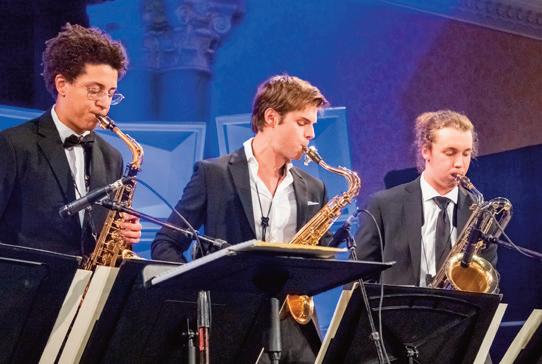
November 3–6, 2022
Audition Deadline: May 27, 2022, 11:59 PM ET
nafme.org/ANHE
The NAfME All-National Honor Ensembles (ANHE) represent the top performing high school musicians in the United States. So much more than a musical showcase, the ANHE program is a comprehensive and educational experience.
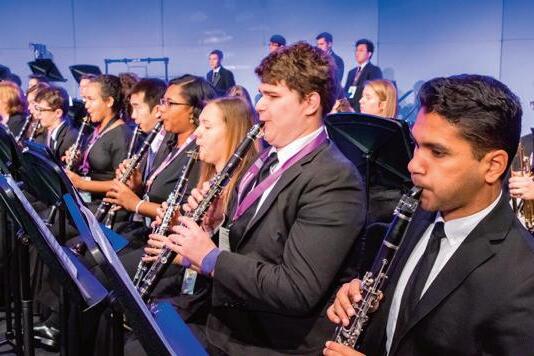


The 2022 ensembles will meet at the Gaylord National Resort & Convention Center in National Harbor, Maryland under the leadership of top conductors in the field of music education. The ensembles will be comprised of:
Meet the 2021 Conductors
Concert Band led by Rodney Dorsey
Symphony Orchestra led by Nobuyoshi Yasuda
Mixed Choir led by Frances Fonza
Guitar Ensemble led by Chuck Hulihan
Jazz Ensemble led by Todd Stoll from Jazz at Lincoln Center
Modern Band led by Bryan Powell
https://nafme.org/programs/all-national-honor-ensembles/


